Rise and Progress of the Church in Canada
Roy A. Prete
Roy A. Prete, “Rise and Progress of the Church in Canada,” in Canadian Mormons: History of the Church of Jesus Christ of Latter-Day Saints in Canada, ed. Roy A. and Carma T. Prete (Provo, UT: Religious Studies Center; Salt Lake City: Deseret Book, 2017), xx-21.
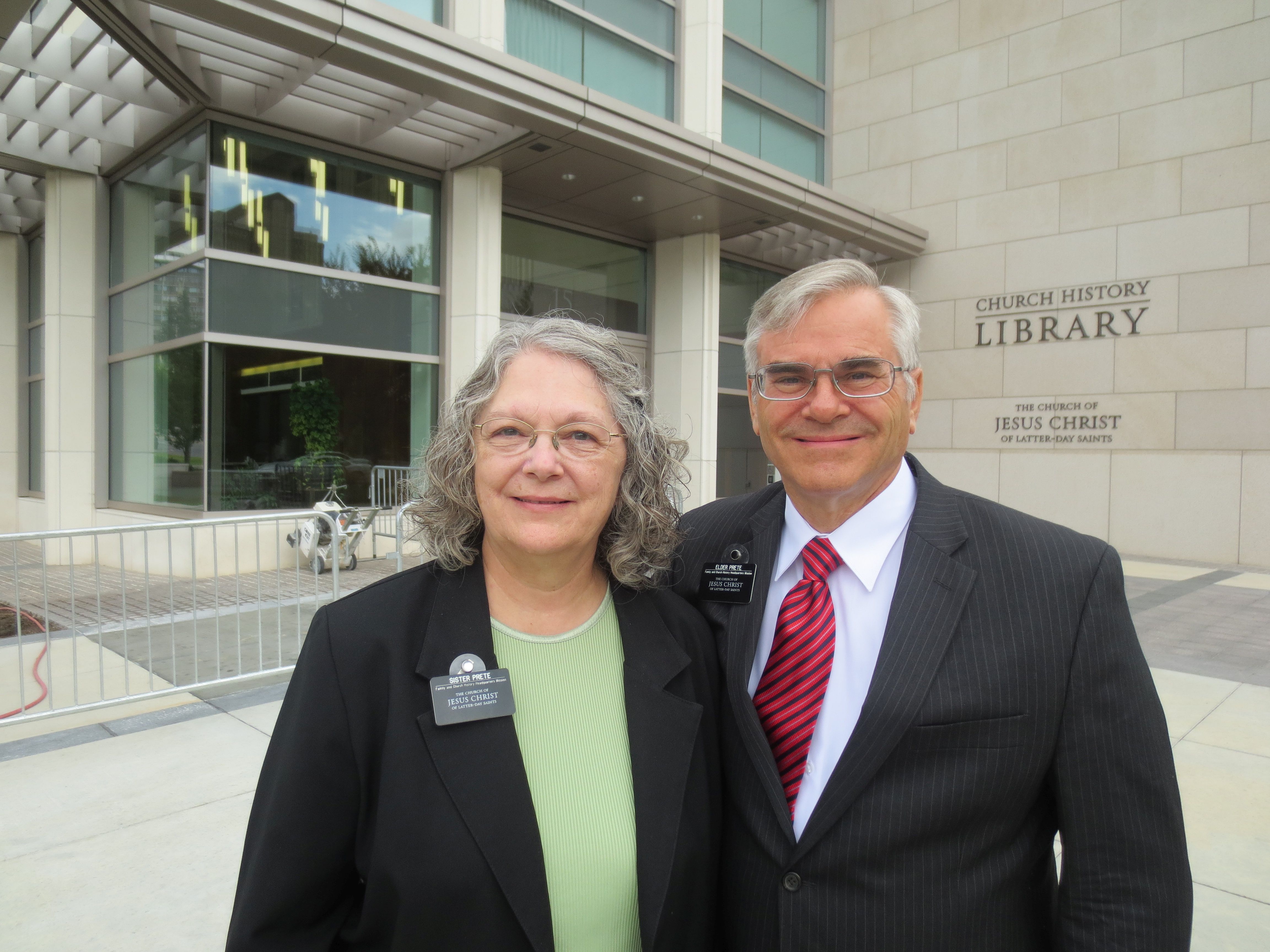
Roy A. Prete is an emeritus professor of history at the Royal Military College of Canada in Kingston, Ontario. He obtained his MA from Brigham Young University and his PhD from the University of Alberta. He has published several articles on World War I and a book, Strategy and Command: The Anglo-French Coalition on the Western Front, 1914, with volumes forthcoming for 1915 and 1916. He is the editor or coeditor of eight books, including Window of Faith: Latter-day Saint Perspectives on World History and The Mormons: An Illustrated History of The Church of Jesus Christ of Latter-day Saints. He served a mission in France and has served as bishop, high councilor, counselor in a district and a mission presidency, and, with his wife, as a senior missionary from 2013 to 2016 in the Family and Church History Headquarters Mission in Salt Lake City, Utah. He is married to Carma J. Taylor, and they are the parents of six and grandparents of twenty-four. (Kimberly Reid)
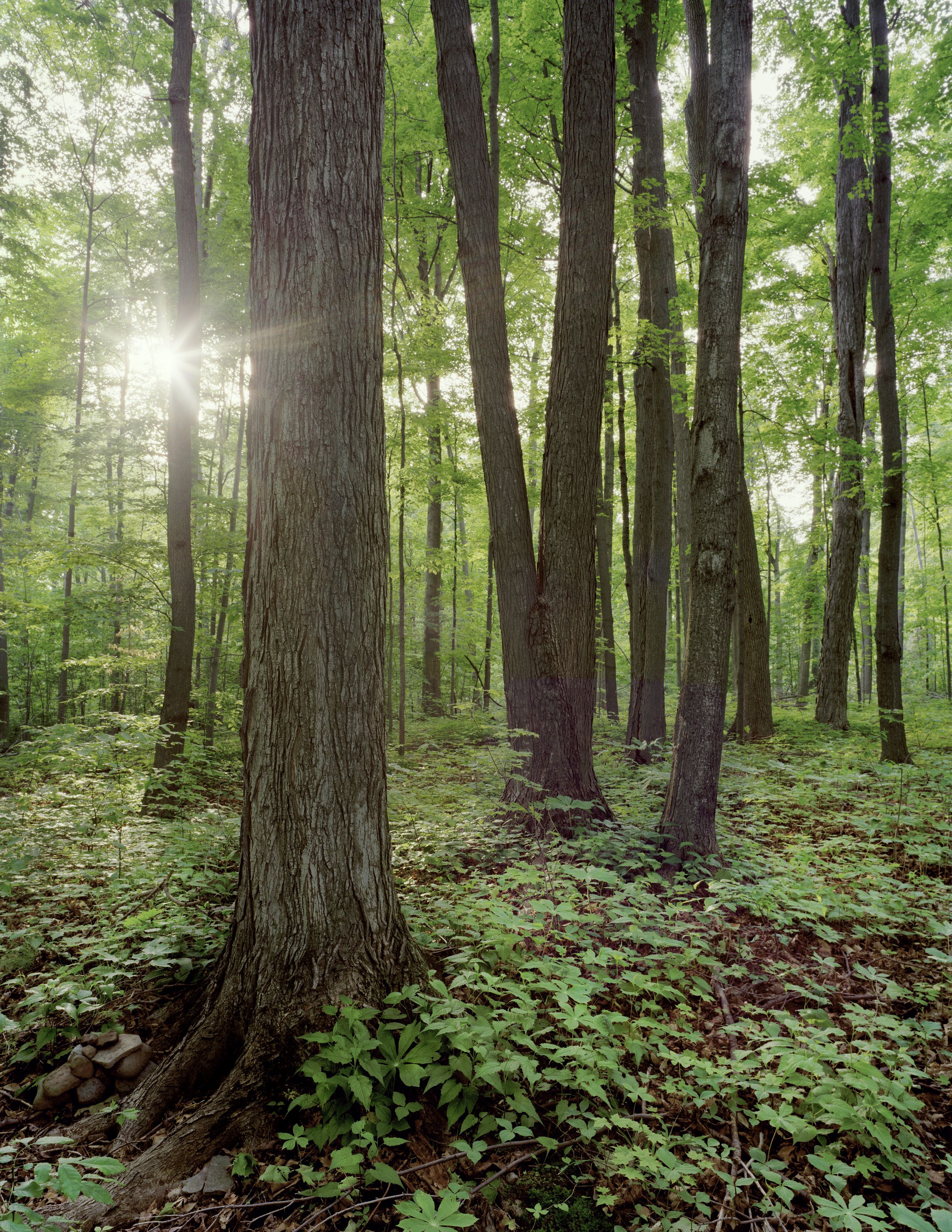 As a youth, Joseph Smith went to this secluded grove of trees in 1820 to ask the Lord which church he should join. From this inquiry, The Church of Jesus Christ of Latter-day Saints was born. (Val Brinkerhoff)
As a youth, Joseph Smith went to this secluded grove of trees in 1820 to ask the Lord which church he should join. From this inquiry, The Church of Jesus Christ of Latter-day Saints was born. (Val Brinkerhoff)
This book gives a panoramic view of the rise and progress of The Church of Jesus Christ of Latter-day Saints in Canada. It is a fascinating story. Stretching for nearly two centuries since the organization of the Church in Fayette, New York, in 1830, it is a story of remarkable growth and development in the face of numerous obstacles and challenges. It has all the elements of a great saga, including that of early faithful missionaries preaching in eastern Canada without “purse or scrip” in the 1830s and 1840s and the exodus of early Canadian converts who joined with the main body of the Church in Ohio, Missouri, and Illinois, then trekked across the Great Plains to Utah in the Rocky Mountains. It tells of Mormon pioneers from Utah arriving in southern Alberta after 1887, having made a second grand trek—this time north rather than west—to escape their persecutors. It is the story of an ongoing missionary effort from the late nineteenth century, throughout the twentieth and into the twenty-first century, with a vast number of missionaries, and the sustained effort of thousands of lay leaders and members, labouring tirelessly to build up the Church. It involves coping with immense challenges of distance and often inclement and very cold winter weather, in travelling to attend to the needs of distant and scattered members, and spread-out wards and branches within larger administrative units.
The permanent establishment of the Church (whose members are often referred to as Mormons because of their belief in the Book of Mormon) across the entire country is a story of remarkable accomplishment, whatever the viewpoint, whether that of faithful believer or independent observer. With only a few scattered families in Canada before the Cardston, Alberta, settlement in 1887, the Latter-day Saint community had grown by the end of 2015 to become a significant religious community spanning the entire country. The growth of the Church and its spread across Canada in the last half century has been particularly remarkable. Total membership in 1966 was 50,015, with approximately 52 percent living in Alberta, the Church’s original base. By the end of 2015, membership had grown to nearly 194,000, with members spread across the entire country and just 42 percent located in Alberta.[1] In that period, stakes have multiplied from nine to forty-eight, and temples have increased from one temple in Cardston, Alberta, to eight stretching from coast-to-coast, with one more announced for Winnipeg, Manitoba.[2]
The growing maturity of the Church in Canada is reflected in each province and region, which has followed a similar pattern of growth, from very small beginnings to the establishment of a temple, giving the full benefits of Church membership. This has been an arduous journey involving much dedication, perseverance, courage, mutual support, and service. The thesis of this book, the collaborative work of several scholars, is that the main ingredient in that accomplishment was faith—the faith of leaders, members, and missionaries—which runs like a thread through the story.
The Church of Jesus Christ of Latter-day Saints is a dynamic religious movement based on the belief that God had restored his gospel through a modern-day prophet, Joseph Smith. A vital mission of the new Church that he established was to share the message of the restored gospel with all the world. From the early days of the Church, Eastern Canada has been a ready field for missionary work, because of its close proximity with upstate New York, where the Church was organized. Throughout succeeding stages of its development, the Church in Canada has been closely linked with the Church in the United States. The regional nature of Canada, as an extension northward of similar regions in the US, has further enhanced this tendency and often resulted in a north– south regional administration.
At the same time, the Church in Canada, while conforming to Church policies and programs, has adjusted to the Canadian environment. As the country developed, the Church adapted its cultural traditions and created new ones within the Canadian context. In large measure, Mormons have come to mirror, though with some variations, the diverse ethnic and cultural mosaic of Canada—with First Nations people, a substantial French community in Quebec, and a significant share of visible minorities from a wide range of cultures, particularly in the big cities. Mormons are an ethnoreligious group with a distinctive lifestyle and family values. They have made a considerable contribution in a multitude of fields both within and outside Canada.
This introductory chapter will discuss the origins and dynamics of the new religion, outline the history of Canadian Mormon development within its historic context, and indicate the main themes and patterns. It will explore the mission and purpose of Canada in the divine plan from a Latter-day Saint perspective. It will discuss the challenges of relating the vast panorama of Canadian LDS history in a reader-friendly manner to diverse audiences and to explore the rationale behind the book’s design, which has combined a well-researched text with a highly illustrated presentation. Finally, this brief chapter—acting as bridge between past and present—will assess the literature in the field, discuss the method and approach used in the book’s preparation, which has resulted in a collaborative work, with experts drawn from many fields, and define the book’s intended mission in the preservation and enhancement of the faith heritage of the Latter-day Saints in Canada.
The Restoration of the Gospel and the Mission of the Restored Church
To fully understand Mormonism as a dynamic movement, one needs to understand not only its origins but also the set of beliefs that inspired the remarkable efforts of its adherents to spread the message and to gather together Church members for the establishment of new Zion communities. The movement spread first into Canada, then to Great Britain and western Europe, and eventually encompassed the entire world in its field of action.
Origins and Beliefs
The Church of Jesus Christ of Latter-day Saints owes its origin to a young boy’s prayer. In 1820, Joseph Smith Jr. was a fourteen-year-old farm boy from Manchester, near Palmyra, New York. He was the fourth child in a family of nine children born to Joseph Smith Sr. and Lucy Mack Smith. Though not given to wide reading, he was disposed to serious and thoughtful reflection. In a pioneer era penetrated by religionists of various stripes, the neighbourhood was the scene of considerable religious strife as camp preachers extolled various doctrines. Some members of his family had joined the Presbyterian Church, while others were attracted to the Methodists. Joseph, wanting to decide which of the churches he should join, was unable to decide by an appeal to the Bible, as the various preachers interpreted the same passages of scripture quite differently.[3]
The Smith family was a God-fearing family who had daily prayer and read the scriptures. One day, Joseph read James 1:5, which says, “If any of you lack wisdom, let him ask of God, that giveth to all men liberally, and upbraideth not; and it shall be given him.” His account follows: “Never did any passage of scripture come with more power to the heart of man than this did at this time to mine. . . . I at length came to the determination to ask God, concluding that if he gave wisdom to those who lacked wisdom, . . . I might venture” (Joseph Smith—History 1:12–13).
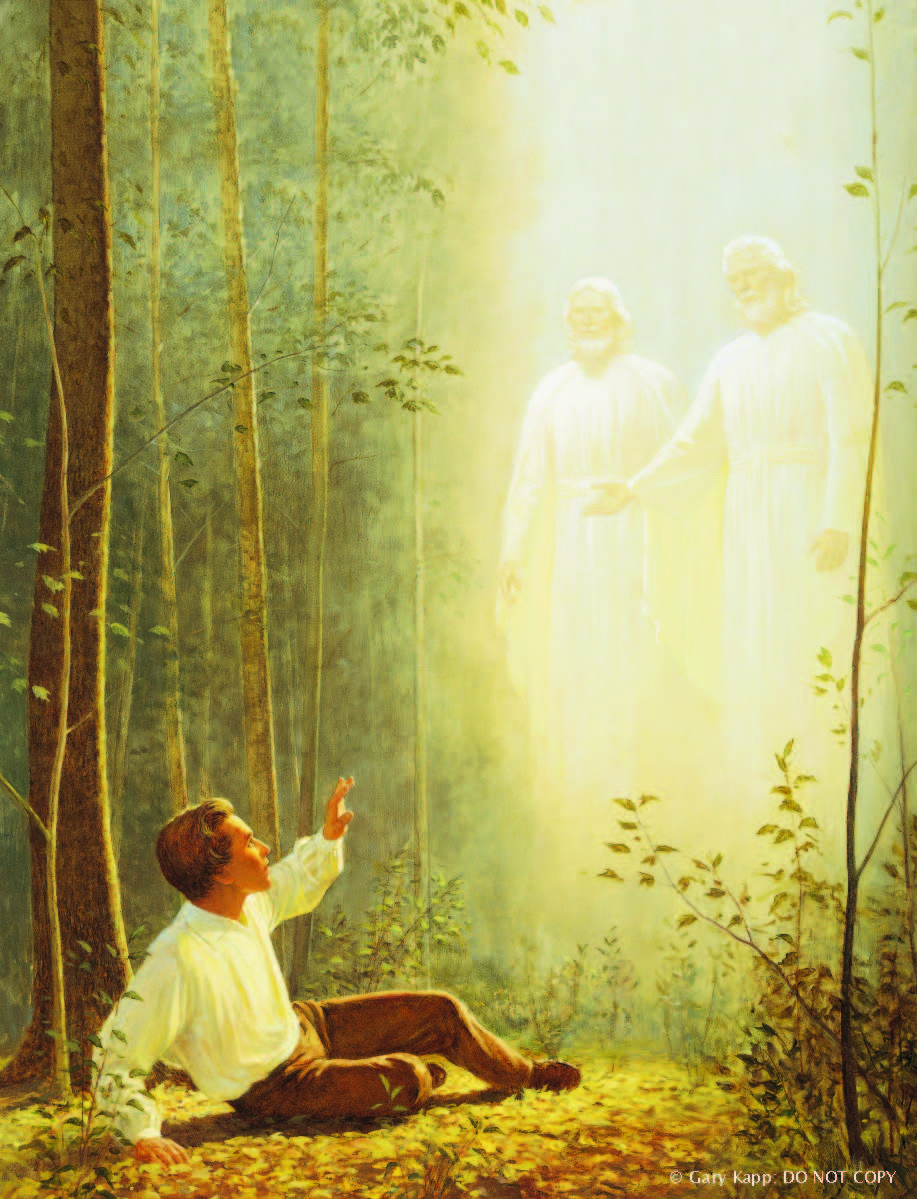 In 1820, confused by the contradictory claims of competing religions, Joseph Smith, as a boy of fourteen, went into a secluded grove to ask God which church was right. In response to his fervent prayer, God the Father and Jesus Christ appeared to him, as depicted in this painting by Gary L. Kapp, and instructed him that he should not join any of the churches. (Gary Kapp, Intellectual Reserve, Inc. [hereafter IRI])
In 1820, confused by the contradictory claims of competing religions, Joseph Smith, as a boy of fourteen, went into a secluded grove to ask God which church was right. In response to his fervent prayer, God the Father and Jesus Christ appeared to him, as depicted in this painting by Gary L. Kapp, and instructed him that he should not join any of the churches. (Gary Kapp, Intellectual Reserve, Inc. [hereafter IRI])
On the morning of a beautiful spring day, he retired to a grove of trees near his father’s log cabin and, for the first time in his life, prayed vocally to God. He recounted his experience as follows: “I saw a pillar of light exactly over my head, above the brightness of the sun, which descended gradually until it fell upon me. . . . When the light rested upon me I saw two Personages, whose brightness and glory defy all description, standing above me in the air. One of them spake unto me, calling me by name and said, pointing to the other—‘This is My Beloved Son. Hear Him!’” (JS—H 1:16–17).
Regaining his composure, he asked which of the many churches he should join. He was told he should join none of them, that the true church was not upon the earth at that time, but that if he were faithful, the fullness of the gospel would be made known unto him at a later date (JS—H 1:18–20).[4]
Left alone amidst intense persecution resulting from the telling of the story of his remarkable vision to local preachers, Joseph sought the Lord’s further direction in prayer. On the night of 23 September 1823, an angelic visitant who introduced himself as Moroni, a former inhabitant of the Americas, appeared at Smith’s bedside. The angel, glorious in appearance, announced that there was a sacred record written on gold plates, deposited in a nearby hillside, which contained the record of the former inhabitants of the Americas and the fullness of the gospel as delivered by Jesus Christ to them. After a tutelage of four years with annual visits by the angel, Smith received the plates, which he translated into English by “the gift and power of God.” This new scripture of the Americas, called the Book of Mormon, became the “keystone” of the new religion and was published in March 1830 (JS—H 1:20–62). As a companion scripture to the Bible, its mission was to serve as a second witness for Christ and to provide confirming evidence of the prophetic calling of Joseph Smith (Introduction to Book of Mormon).
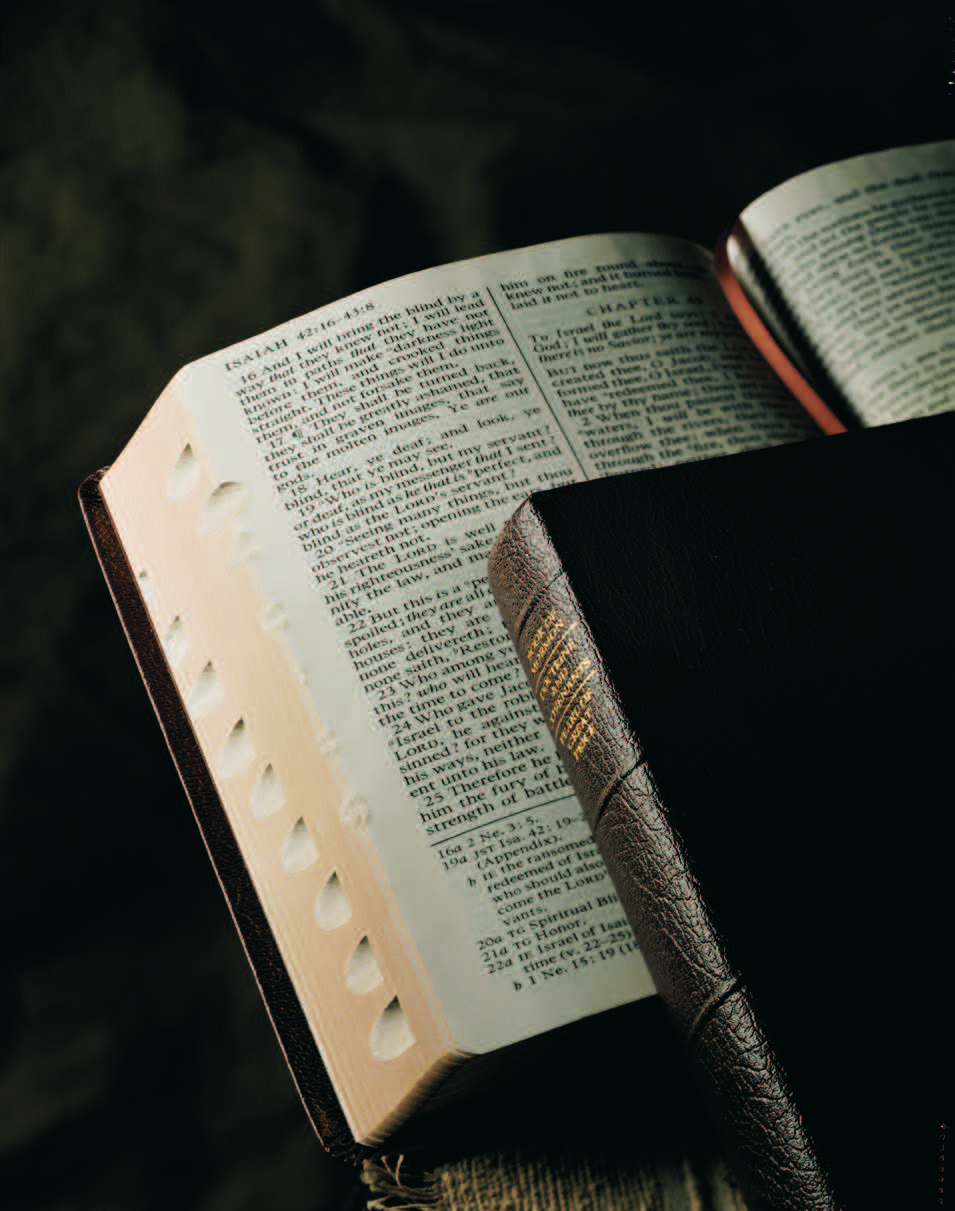 Latter-day Saints accept the Holy Bible as the word of God, but they also have additional scripture; the Book of Mormon, Another Testament of Jesus Christ, in which gospel principles are taught in great plainness; and two additional books, the Doctrine and Covenants and the Pearl of Great Price, which are largely revelations given to Joseph Smith for the guidance and instruction of the Church. (IRI)
Latter-day Saints accept the Holy Bible as the word of God, but they also have additional scripture; the Book of Mormon, Another Testament of Jesus Christ, in which gospel principles are taught in great plainness; and two additional books, the Doctrine and Covenants and the Pearl of Great Price, which are largely revelations given to Joseph Smith for the guidance and instruction of the Church. (IRI)
While translating the plates, Smith and his scribe Oliver Cowdery were impressed with a passage in the text that underlined the necessity in the gospel plan for baptism for the remission of sins. Retiring to the woods to pray, they were visited by another angelic person, the resurrected John the Baptist, who conferred on them “the Priesthood of Aaron which holds the keys of the ministering of angels, and of gospel of repentance, and of baptism by immersion for the remission of sins” (JS—H 1:66–69). Smith and Cowdery then baptized each other. A short time later they were visited by ancient Apostles Peter, James and John, who conferred upon them the apostleship and priesthood authority they had received from Jesus Christ. This higher priesthood authority was called the Melchizedek Priesthood (see Hebrews 7:1–4 and JST, Hebrews 7:3). With this endowment of priesthood keys and authority, Smith was able to reestablish the Church of Christ on the earth, which he did, with six official signatories on its charter of incorporation, in a gathering of about fifty people, at Fayette, New York, on 6 April 1830.
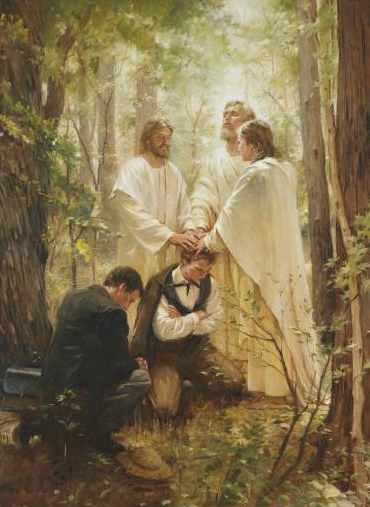 In the spring of 1829, ancient Apostles Peter, James, and John appeared to Joseph Smith and Oliver Cowdery and conferred upon them the Melchizedek Priesthood. (Walter Rane, IRI)
In the spring of 1829, ancient Apostles Peter, James, and John appeared to Joseph Smith and Oliver Cowdery and conferred upon them the Melchizedek Priesthood. (Walter Rane, IRI)
The new Church had as its mission to take the restored gospel to all the world in preparation for the Second Coming of Jesus Christ. Starting with the Prophet’s brother Samuel, ordained missionaries, furnished with copies of the Book of Mormon and little else, spread the news of the Restoration in the eastern United States and undertook the spread of their message to Upper Canada (now Ontario) in the Kingston area, as early as 1832.
While the early zeal of Mormon missionaries was based on the concepts of a new prophet on the earth, the Book of Mormon as an additional scripture, and the restoration of the pristine Christian Church, many of the tenets of the new religion were a blend of traditional Christian beliefs with new understandings. On the day the Church was organized, Joseph Smith received a revelation reaffirming that Christ died for the sins of the world, and that he “was crucified, died, and rose again on the third day” (Doctrine and Covenants 20:23). Mormon missionaries also declared that the gospel is universal, that “all mankind may be saved” through the Atonement of Jesus Christ “by obedience to the laws and ordinances of the gospel” (Articles of Faith 1:3), and that all will one day be literally resurrected from the dead (1 Corinthians 15:20–22).
Baptism by immersion in water was to follow immediately upon conversion. An 1842 statement by Joseph Smith states that Latter-day Saints “believe that the first principles and ordinances of the Gospel are: first, Faith in the Lord Jesus Christ; second, Repentance; third, Baptism by immersion for the remission of sins; fourth, Laying on of hands for the gift of the Holy Ghost” (Articles of Faith 1:4). Children were given a blessing by the laying on of hands but were not baptized until they reached age eight, deemed the age of accountability (Doctrine and Covenants 20:70–71; 68:27).
 This magnificent mural, by Robert O. Skemp, was displayed at the New York World’s Fair in 1964–65. Entitled The Purpose of Life, it depicts man’s journey from pre-earthly existence through birth and mortal life, with all its perplexities, struggles, and rewards. The final scene depicts the passage at death to the spirit world, with the hope of a glorious resurrection and eternal life in the presence of God for those who have lived worthily. (Robert O. Skemp, BYU–Idaho)
This magnificent mural, by Robert O. Skemp, was displayed at the New York World’s Fair in 1964–65. Entitled The Purpose of Life, it depicts man’s journey from pre-earthly existence through birth and mortal life, with all its perplexities, struggles, and rewards. The final scene depicts the passage at death to the spirit world, with the hope of a glorious resurrection and eternal life in the presence of God for those who have lived worthily. (Robert O. Skemp, BYU–Idaho)
The new religion was the subject of intense persecution, which resulted in its relocation in succession from the state of New York to Ohio, Missouri, and Illinois. After the martyrdom of Joseph Smith on 27 June 1844, the Saints moved to the Great Salt Lake basin under the leadership of Brigham Young, beginning with the arrival of the first company on 24 July 1847. The Church then solidified as a pioneer community in the Intermountain West. As a result of early conversions in Canada, Canadian Saints were significant participants in the major events of the Mormon saga from the early days of Joseph Smith to the settlement in the West, and they and their descendants have continued to play a significant role in the unfolding history of the Church.
The Church in Canada: A Story of Challenge
Geography
Canada is a huge country geographically, the second largest in the world, with a landmass that stretches across five and a half time zones from the Atlantic Ocean on the east, to the Pacific Ocean on the west, to the Arctic Ocean on the north. Canada is also a nation of many regions, which reach from the majestic Rocky Mountains of the West, to the wide plains of the prairie provinces, to the Great Canadian shield, a rocky landmass surrounding Hudson Bay like a yoke hundreds of kilometres wide. The Canadian transcontinental landscape encompasses the rich farmlands of southern Ontario, the fertile St. Lawrence valley and the gentle rolling forests and farmland of the Maritime Provinces, and extends to the rocky terrain of Labrador and Newfoundland. The several regions border on the vast expanse of the northern territories, which extends all the way to the North Pole. With just 35.8 million inhabitants in 2015, Canada is lightly populated throughout much of its vast territory; more than 75 percent of its inhabitants live within 150 kilometres of the United States border.[5]
Despite its northerly location, Canada has several climates. While the severity of the Canadian winter in the interior part of the country is proverbial, the Canadian west coast has relatively mild and rainy winters. Winter weather in the area north of Lake Erie and Lake Ontario is moderated by the Great Lakes, and winter temperatures in the east are less severe than on the prairies, though serious winter storms are not uncommon. Generally speaking, the further north one proceeds, the shorter the growing season and the colder the climate.
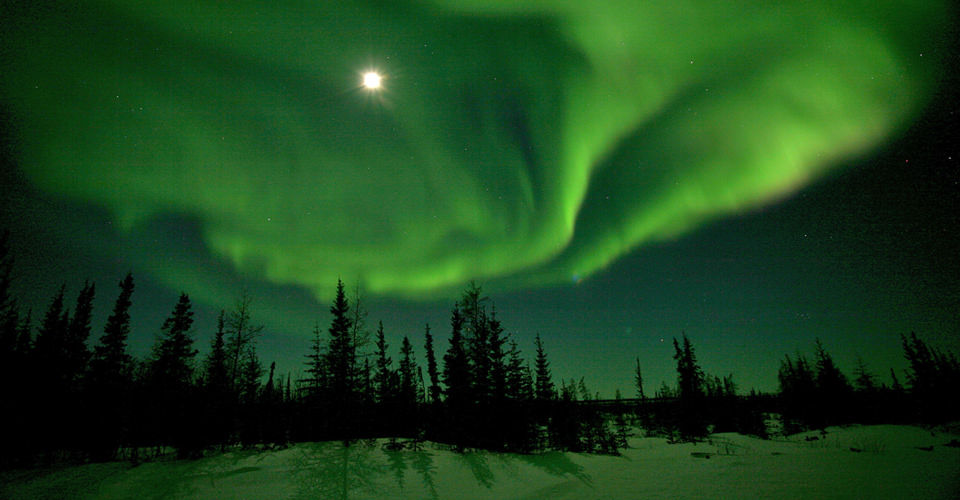 The aurora borealis (northern lights) are often seen in Canada because of its northern latitudes. Noel Burt, the first president of the Saskatoon Saskatchewan Stake, reported that he frequently observed the northern lights as he drove home from distant meetings late at night. (Creative Commons)
The aurora borealis (northern lights) are often seen in Canada because of its northern latitudes. Noel Burt, the first president of the Saskatoon Saskatchewan Stake, reported that he frequently observed the northern lights as he drove home from distant meetings late at night. (Creative Commons)
The challenges of distance and travel in cold and sometimes stormy weather, implicit in the vastness of Canadian geography and the dispersion of its population, have been persistent issues throughout the entire history of the Church in Canada. While Canada has a number of large cities, and is considered to be highly industrialized, it still relies to a considerable extent on primary industries and resource extraction. As a major exporting country, in fact, the largest trading partner of the United States, Canada has been subject to unpredictable fluctuations in the market. The vast disparity in the economic productivity of Canada’s various regions has had a considerable impact on the history of Mormons in Canada, as Church members, along with other Canadians, have migrated between regions in search of employment and for other reasons.
Canada and the United States, along their lengthy common border, share the same geographical features, and the border has served as an only semi-impermeable barrier to the flow of peoples and ideas. Consequently, the history of the Latter-day Saints in Canada, from its earliest days, has been closely connected with that of the Church in the United States.
Main Patterns of Development
The development of The Church of Jesus Christ of Latter-day Saints in Canada has followed three main patterns, which have been reflected in the structure of the book. In succession, these have included the periods of early proselytizing in eastern Canada and the subsequent gathering with the main body of the Church in its movement to the western United States (1830–53). Then came the gathering to the Alberta settlement with the arrival of a group of Mormon pioneers led by Charles Ora Card in Cardston, Alberta, in 1887, followed by a second wave of Alberta settlers engaged in canal building for irrigation. Finally, starting toward the end of the nineteenth century, the phased-in renewal of missionary work began in successive provinces, resulting in the permanent establishment of the Church across the country. This growth following the initial Alberta settlement, while benefitting from the Mormon presence in southern Alberta, has largely been the result of missionary work and the faithful service of Church members who have laboured diligently to build up the Church in their areas.
Eastern Canada (British North America until Confederation in 1867) was a fruitful field for preaching the gospel in the early days of the Restoration. In 1832, the arrival of six missionaries in the Kingston area, Upper Canada (now Ontario), marked the first organized preaching of the restored gospel outside the United States. Missionary work soon spread to other areas. Joseph Smith himself travelled to the Brantford area in 1833 and to Toronto in 1837. In Upper Canada, the main focal points for early preaching were the Kingston-Leeds County areas and the Toronto-Brantford areas, where substantial numbers joined the Church in the 1830s and 1840s. A handful of missionaries also preached in the same period with some success in the English-speaking part of Lower Canada (later Quebec) and the Maritime colonies, Prince Edward Island, New Brunswick, and Nova Scotia, making small numbers of converts in each location. It has been estimated that by the time proselyting drew to an effective close in 1853, there were approximately 2,500 Canadian converts. By this time, most of these had emigrated to the United States as part of the gathering and had joined the main body of the Church prior to the western exodus from Nauvoo, Illinois, to Utah. Several Canadian Saints became important Church leaders, including John Taylor, a Toronto convert who became the third President of the Church (1877–87), and Marriner W. Merrill, a New Brunswick convert who served many years as an Apostle (1889–1906).[6]
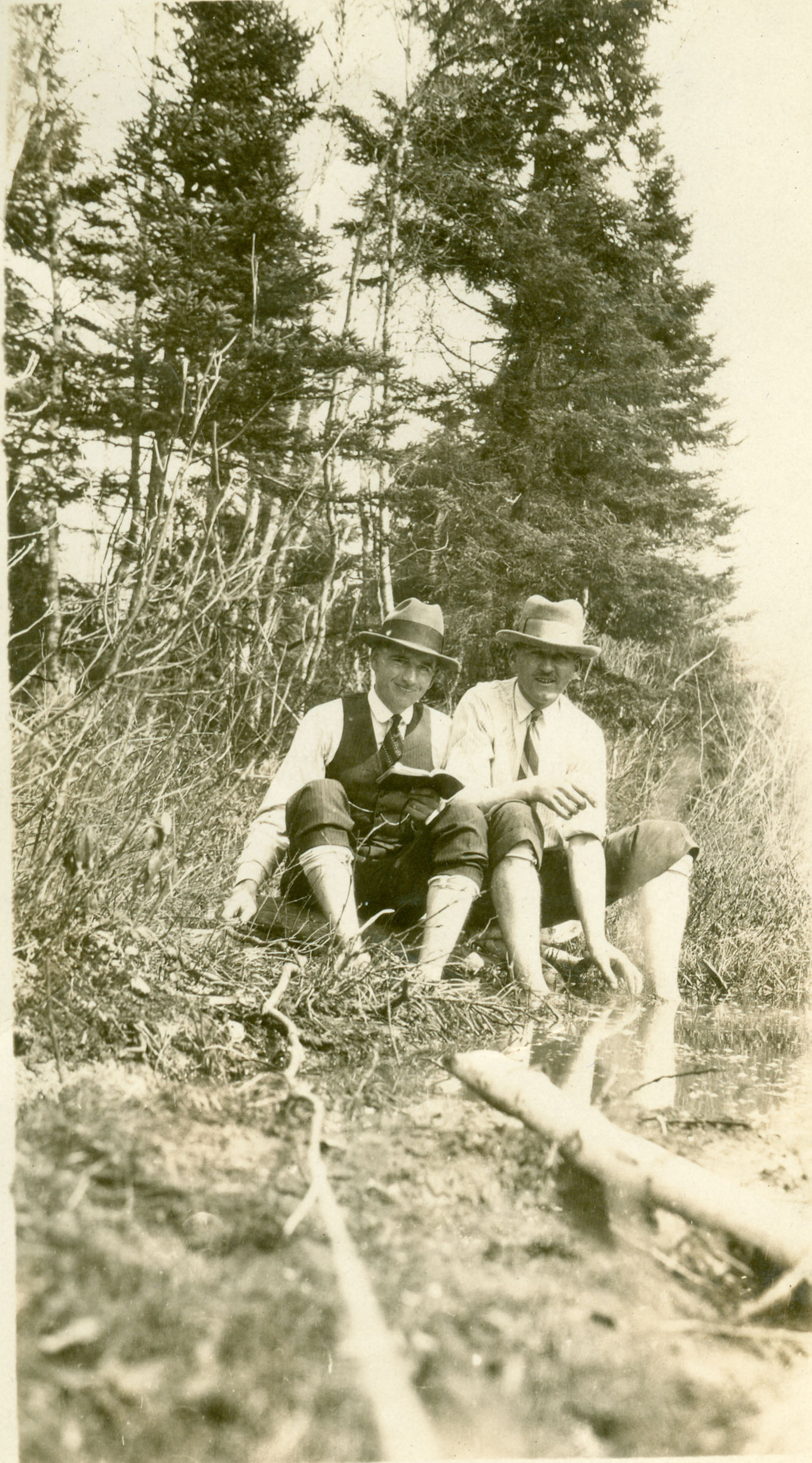 In the early years of the Canadian Mission, which was established in 1919, missionaries often spent the summers doing “country work,” labouring without purse or scrip as they proselytized in rural areas. This photograph, taken between 1925 and 1928, shows two elders in the Canadian Mission, easing their tired feet. (Leslie T. Maw, Church History Library)
In the early years of the Canadian Mission, which was established in 1919, missionaries often spent the summers doing “country work,” labouring without purse or scrip as they proselytized in rural areas. This photograph, taken between 1925 and 1928, shows two elders in the Canadian Mission, easing their tired feet. (Leslie T. Maw, Church History Library)
The migration pattern of the Latter-day Saints followed that of the general population, with 1.5 million Canadians emigrating to the United States in the nineteenth century and the reverse flow of two million emigrating from the US to Canada from approximately 1885 until 1931.[7] These respective waves of migration were responding mainly to economic conditions, largely the quest for free lands on the western American frontier, and then the quest for free lands in the Canadian West as the American frontier began to fill up toward the end of the century. In contrast, Mormon migrations, while following the same pattern, were largely for religious reasons. From the 1830s to the 1850s, their purpose was to gather with the Saints, and in the late 1880s, their purpose became to relocate to Alberta, Canada, in response to religious persecution.
In the spring of 1887, Charles O. Card, president of Cache Stake in Logan, Utah, led a small group of forty-one Saints to Lee Creek (later Cardston), Alberta, laying the foundation for the establishment of a permanent Mormon presence in Canada. Having been arrested in 1886 for the practice of plural marriage, Card planned to seek refuge in Mexico. But following the advice of President John Taylor, who assured him that he would find British justice in Canada, Card first went on an exploratory mission to British Columbia and Alberta in 1886, and the next year led a small group of settlers to Lee Creek, just twenty-four kilometres beyond the US border.[8] These first arrivals were the vanguard of several thousand more who would follow, many coming toward the turn of the century to open up irrigation lands in a massive canal building enterprise. Magrath and Stirling were founded on the canal line, and Raymond soon followed on a canal spur as a sugar beet enterprise. The dedication of the Cardston Alberta Temple in 1923 provided a solid anchor for the southern Alberta Saints, who then numbered 9,500.[9] Southern Alberta thus became the focal point for the development of the Church in Canada and a second gathering place for Canadian Saints who no longer needed to migrate to Utah to have the full blessing of the temple. In due course, as southern-Alberta Saints moved northward within the province and to other locations across the country, they played a significant role in the establishment of the Church in Canada.[10]
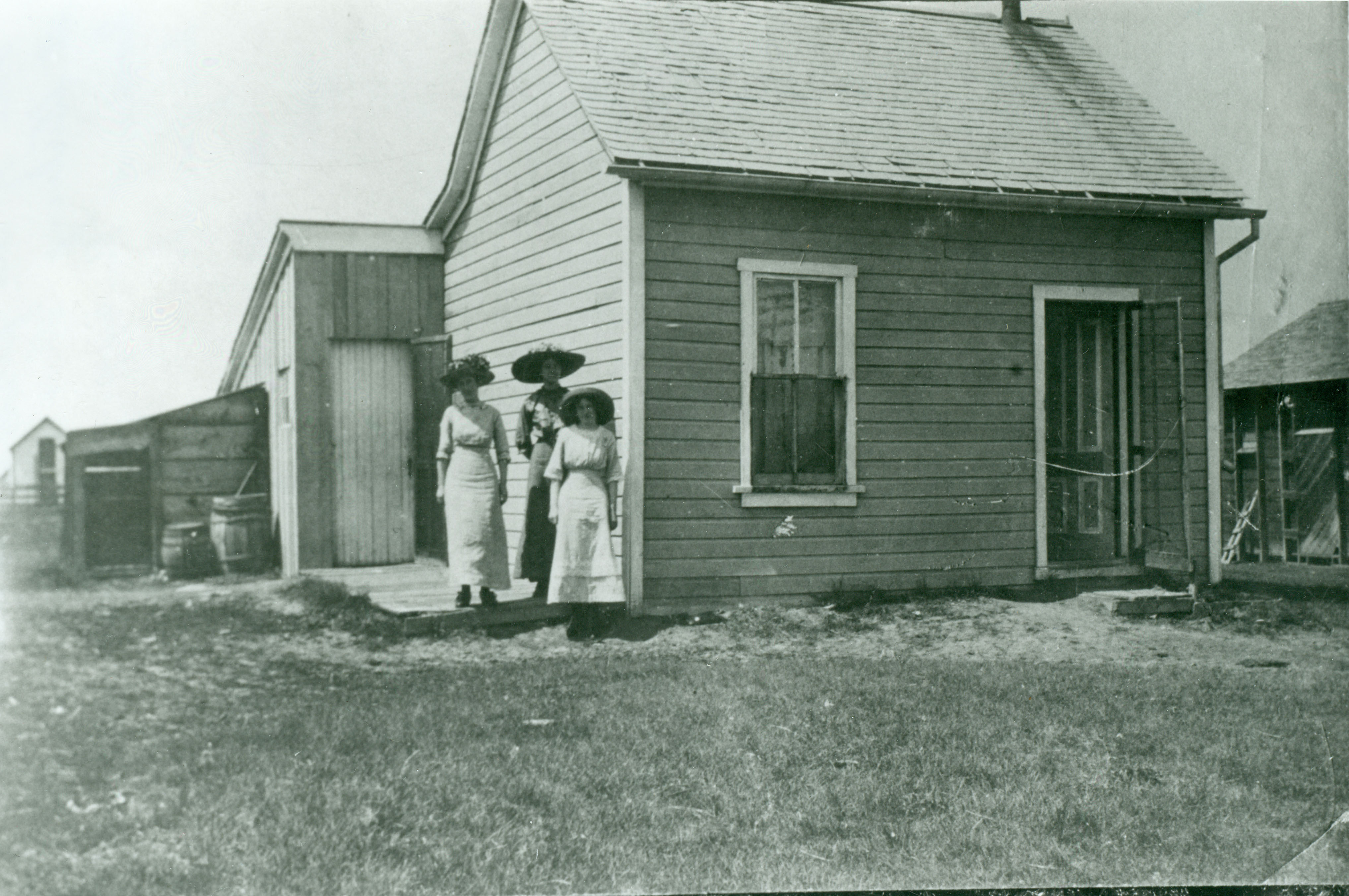 The town of Stirling was settled in 1899 as the St. Mary Canal was completed to provide irrigation to the surrounding lands. The first resident of Stirling was Theodore Brandley, who became the first bishop of the Stirling Ward. His home, shown here, was one of the first six homes built in Stirling. (Church History Library)
The town of Stirling was settled in 1899 as the St. Mary Canal was completed to provide irrigation to the surrounding lands. The first resident of Stirling was Theodore Brandley, who became the first bishop of the Stirling Ward. His home, shown here, was one of the first six homes built in Stirling. (Church History Library)
The bulk of this book covers the permanent establishment of the Church in other provinces, largely in the twentieth century, which followed a different pattern common to the mission field. The work of the missions and missionaries were the motor for that development. Faithful missionaries came as areas were progressively opened for missionary work. But before their arrival, scattered families—converts from elsewhere, isolated from immediate contact with Church members—heroically survived on their own, sometimes for as much as twenty years or more. When missionaries arrived, the work progressed slowly. Building on a foundation of one or two faithful convert families, these scattered survivors, or one or two member families who had moved from elsewhere, the missionaries established struggling little branches in each locality. These first branches met in private homes and then in rented halls until they were able to acquire or build a local chapel, the result of vigorous fundraising efforts involving such things as bake sales, rummage sales and catalog deliveries.
From these humble origins have sprung the thriving wards and branches and the larger faith community we now see across the entire country. From its early beginnings to the end of 2015, the Church in Canada had grown into a large religious community of 193,850 members with 486 congregations spread across the nation. And it accomplished this despite the challenges of vast distances, regional economic disparity, and severe winter weather conditions. The acceleration of Church development in the last fifty years, with the multiplication of stakes from nine in 1966 to forty-eight in 2016, has been an important theme.[11]
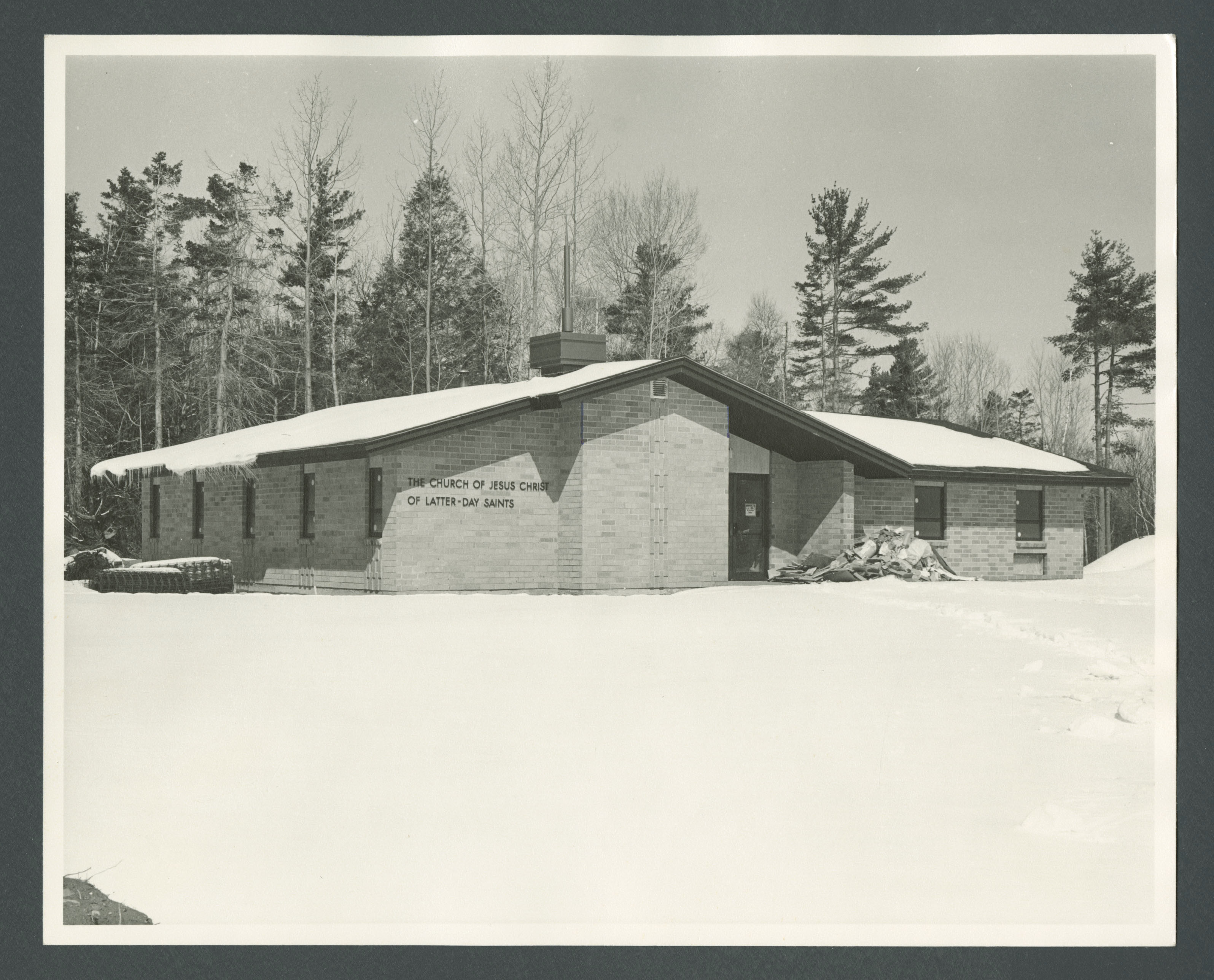 Many Latter-day Saint meetinghouses are designed so they can be built in phases, allowing for a small congregation to qualify for a small, basic building (with a multipurpose room for worship services and activities, plus classrooms, offices, a library, and a baptismal font), and, as the membership increases, to have more phases added to the existing structure. This photograph shows the first phase building of the Kentville Branch in Nova Scotia, completed in 1977. Six classrooms were added in 1979, and a chapel was dedicated in 1984.[12] (C. R. MacKenzie Photography, Church History Library)
Many Latter-day Saint meetinghouses are designed so they can be built in phases, allowing for a small congregation to qualify for a small, basic building (with a multipurpose room for worship services and activities, plus classrooms, offices, a library, and a baptismal font), and, as the membership increases, to have more phases added to the existing structure. This photograph shows the first phase building of the Kentville Branch in Nova Scotia, completed in 1977. Six classrooms were added in 1979, and a chapel was dedicated in 1984.[12] (C. R. MacKenzie Photography, Church History Library)
Most congregations are now housed in attractive and functional meetinghouses, which signify the establishment of a permanent Mormon presence in each community. The crowning achievement has been the construction of temples for the performance of sacred ordinances in each of the regions, with nine temples (eight completed and one more approved for construction), stretching from Vancouver to Halifax. The temple symbolizes not only the deep spiritual quest of the members in a time of declining moral and ethical values, but also signifies the maturity and stability of the Church in Canada.
Canadian Accomplishments
Canadians have made a considerable contribution to the Church generally and to the countries in which they have lived, from the earliest Canadian converts in the 1830s to the present day.[13] Important Canadian converts in the 1830s and 1840s included John Taylor, a Toronto convert who became the third president of the Church; Mary Fielding, whose son Joseph F. Smith and grandson Joseph Fielding Smith both became Church Presidents; and Marriner W. Merrill, a New Brunswick convert, who later became an Apostle, as did his son, Joseph F. Merrill. In addition, Canadian converts were instrumental in taking the restored gospel to England and Scotland and in founding several settlements in Utah.
During the Alberta settlement period, Latter-day Saints introduced large-scale irrigation to Canada, and Asael E. Palmer at the Lethbridge Experimental Station pioneered agricultural techniques and plants suitable for the Alberta climate. In 1935, N. Eldon Tanner was elected to the Alberta Legislative Assembly, where he was appointed Speaker and later Cabinet Minister. Following his governmental service, he spearheaded the building of the Trans-Canada Pipeline. Elected to the Alberta Legislative Assembly at the same time as Tanner, Solon Low, after a decade of service there, won election to the Canadian Parliament, joining John Blackmore, who had been elected in 1935. Low became the longtime leader of the national Social Credit Party. Other Church members have risen to prominence as mayors of cities and towns in Alberta, including Don Mackay, mayor of Calgary, who introduced the custom of presenting distinguished visitors to Calgary with a white Stetson hat. Many Latter-day Saints have served in the professions, in business and have distinguished themselves in sports and in other fields.
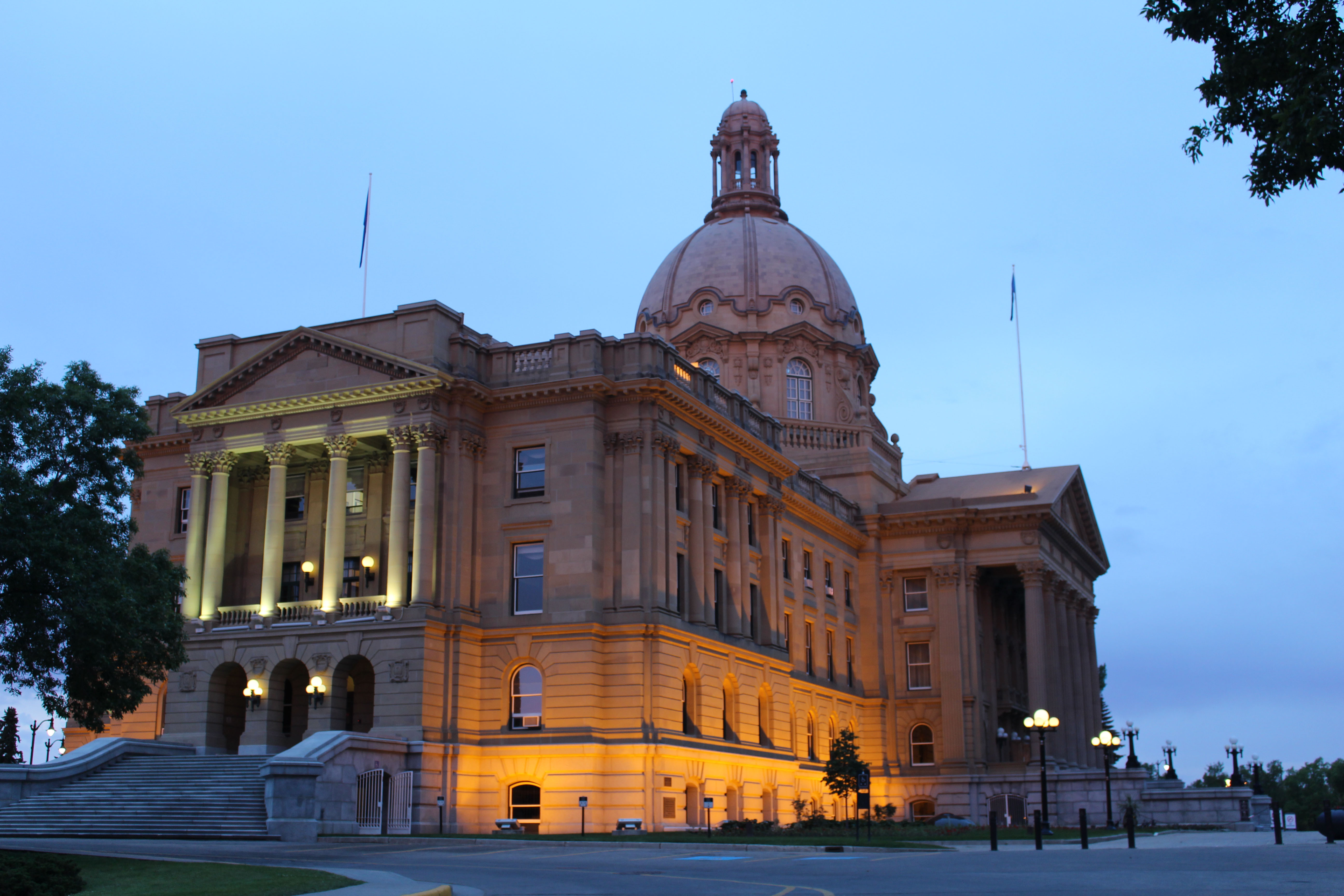 Over twenty-five Latter-day Saints have been elected to the Alberta Legislative Assembly and several have served as cabinet ministers. There has been at least one member of the Church in each legislative assembly since the province was organized in 1905. (Walter Meyer)
Over twenty-five Latter-day Saints have been elected to the Alberta Legislative Assembly and several have served as cabinet ministers. There has been at least one member of the Church in each legislative assembly since the province was organized in 1905. (Walter Meyer)
Many Church members from Canada in the twentieth century have become prominent among the worldwide general leadership of the Church, including N. Eldon Tanner and Hugh B. Brown, who became Apostles and members of the First Presidency; Ardeth G. Kapp, who became Young Women General President; Elaine Jack, who served as Relief Society General President; and a bevy of Seventies and Area Seventies. Canadian Church members have made substantial contributions to their communities and the world at large through providing humanitarian aid, building family history centres, and sending missionaries abroad.[14]
The Purpose and Mission of Canada in the Divine Plan
Land of Liberty
Faithful Latter-day Saints from the time of Joseph Smith have looked upon the United States as a country with a divinely ordained mission and as a land of liberty, uniquely prepared for the Restoration of the gospel. The Book of Mormon proclaims that the Americas will be a land of liberty, free from the control of other nations, if the people will but worship the God of the land who is Jesus Christ (2 Nephi 1:7–11; Ether 1:8–11). According to an 1833 revelation received by Joseph Smith, the free system of government embodied in the US Constitution was of divine origin and intended as a guarantor of the rights of all people (D&C 101: 77-80). While Canada has a somewhat different system of government, more closely tied to the British parliamentary system than the US presidential system, the underlying principles of government by the voice of the people, the rule of law, and the protection of human rights are similar to those of the United States. The grand purpose of Canada as a land of liberty is thus part of the divine heritage of all the Americas.
Place of Refuge
But Canada, over its long history, has had an additional mission as a place of refuge. It served as a refuge for at least forty thousand United Empire Loyalists who came as exiles after the Revolutionary War, which ended in 1783, to establish themselves in a land favourable to their loyalties and beliefs. Many settled in Nova Scotia and New Brunswick and some in Upper Canada, setting the Loyalist tone of these British Provinces. At the same time, two groups of Iroquois, who had fought with the British in the Revolutionary War, were given lands in Canada, with one group coming from a temporary exile in Montreal to settle in the area west of Kingston, and another group crossing the border to locate in the Brantford area.[15]
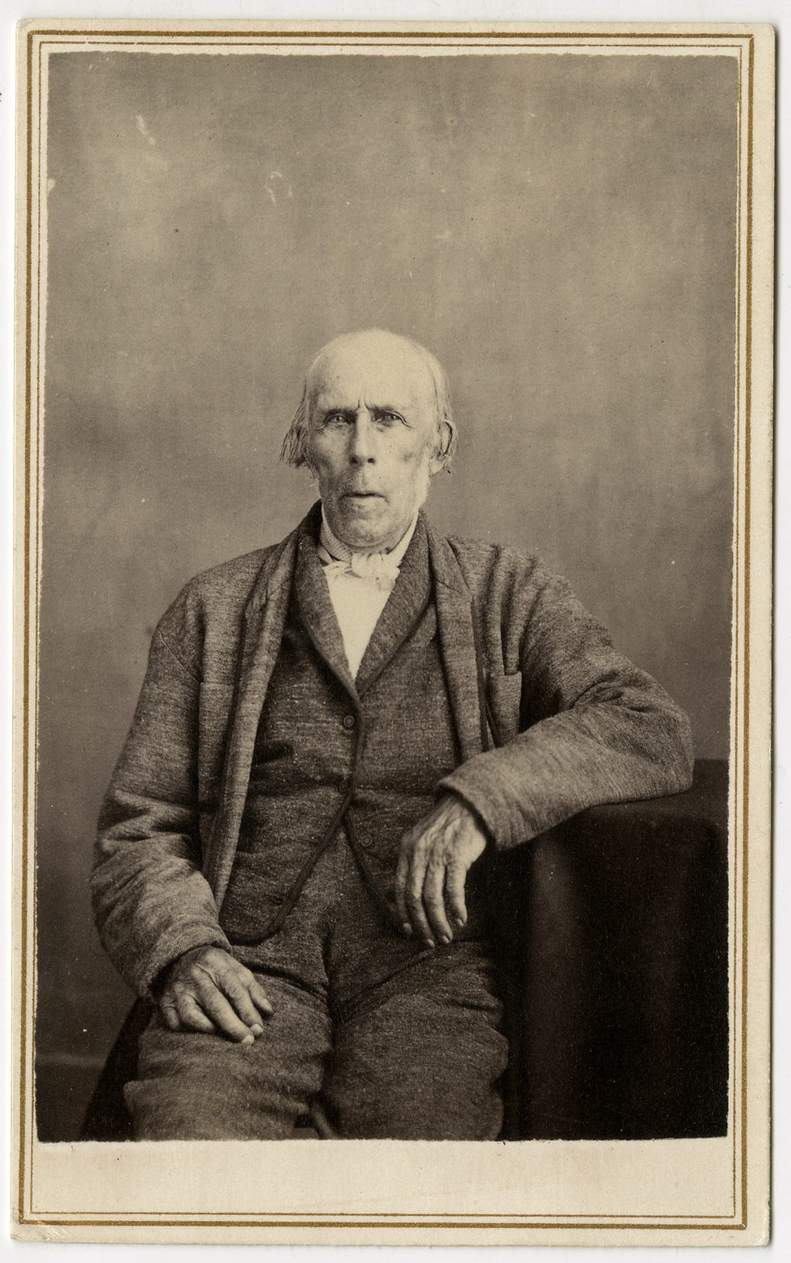
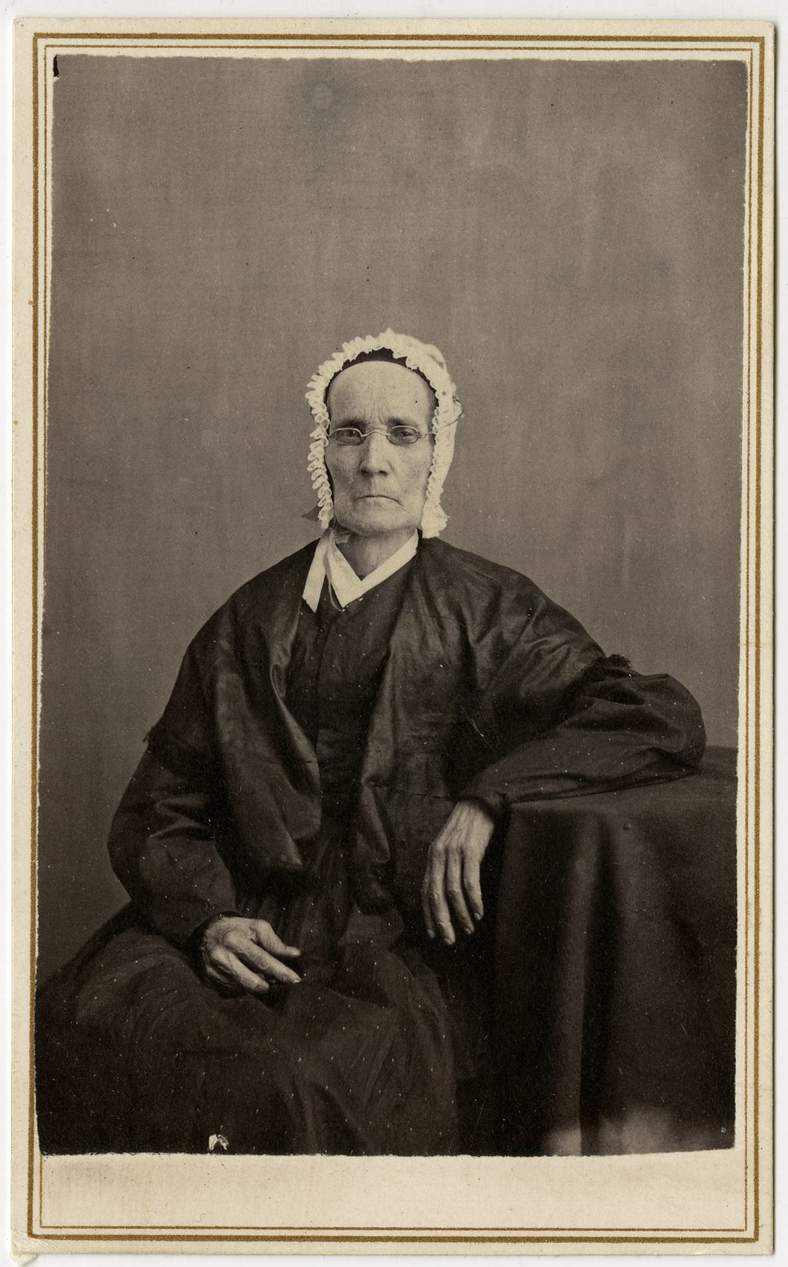 Of the thousands of Loyalists who fled to Canada following the American War for Independence, some responded to the message of Latter-day Saint missionaries in the 1830s and 1840s. James Lake, shown here, came to Canada in 1793 as a child, with his Loyalist parents. His father served with the British during the war. In 1832, Lake, his wife, Philomela, and their large family were converted to the Church in Ernestown, Upper Canada, gathering with the Saints in Kirtland the following year. (Church History Library)
Of the thousands of Loyalists who fled to Canada following the American War for Independence, some responded to the message of Latter-day Saint missionaries in the 1830s and 1840s. James Lake, shown here, came to Canada in 1793 as a child, with his Loyalist parents. His father served with the British during the war. In 1832, Lake, his wife, Philomela, and their large family were converted to the Church in Ernestown, Upper Canada, gathering with the Saints in Kirtland the following year. (Church History Library)
Prior to and during the US Civil War, the Underground Railroad, a secret network of abolitionist sympathizers, assisted a number of escaped black slaves to come to Canada, where they would be free from the danger of fugitive slave hunters.[16] In subsequent decades, various Indian tribes, including the Sioux followers of Sitting Bull, found refuge for several years in Canada, after brutal depredations by the US military.[17]
Certain religious groups in Europe, after experiencing severe persecution for their beliefs, including their pacifism, found refuge in Canada. Some Mennonites relocated into Canada, the first wave arriving in Upper Canada in the late eighteenth century and a later group of seven thousand emigrating from Russia to Manitoba in 1870, attracted by land and a promised exemption from military service. A large group of Doukhobors, also conscientious objectors, emigrated from Russia to Canada in 1899, settling in Saskatchewan and relocating to British Columbia a few years later. In the 1870s, the Hutterites, who likewise had been persecuted in Europe, found refuge in the United States, in the Dakota Territory. But during World War I, they needed a new home because United States laws obliged their sons to serve in the military. Canada was happy to accept the Hutterites as settlers on the prairies in 1918, guaranteeing them freedom of religion and exemption from military service.[18]
People from many countries in Europe found refuge in Canada following wars and oppression in their own lands. Thousands of Jews from Russia, Poland, the Middle East, and Africa found welcome in Canada between 1880 and 1914 and between 1950 and 1990. After the Second World War, during the five-year period from 1947 to 1952, a quarter-million displaced persons from Eastern and Central Europe, victims of both Nazism and Communism, made Canada their new homeland. In 1956, 37,000 Hungarians came to Canada to escape Soviet oppression. From the 1960s onward, refugees have come from Latin America, China, Pakistan, the Balkans, Southeast Asia, Africa, and the Middle East. In 2010, Canada accepted refugees from 140 countries,[19] and in 2016, the country welcomed more than 36,000 Syrian refugees.[20]
That Mormons came to Canada in 1887, seeking freedom from persecution in the US for their practice of plural marriage, fits in well with the long-standing role of Canada as a place of refuge. For Charles Ora Card, who led the first small group of settlers to Cardston in the spring of 1887, Canada was more than a land of economic opportunity—it was a land of liberty. His diary contains many poignant references to Canada as a land of liberty. On 29 September 1886, when Card and his companions, crossed the border into British Columbia while on an exploratory trip to find a place in Canada where Saints could settle, Card wrote, “I took off my hat, swung it around and shouted In Collumbia We are free.”[27] The following year, on 1 June 1887, as Card led the first group of Mormon settlers across the border into Alberta, he wrote that they “halted and gave three cheers for our liberty as exiles for our religion.”[28]
A Special Mission
Within the Latter-day Saint concept of building the kingdom of God and taking its message to all the world, Canada has also been identified as having a special mission. In the dedicatory prayer of the Toronto Ontario Temple in 1990, President Gordon B. Hinckley said, “This nation has become a gathering place for people from scores of other lands. In their veins flows the blood of Israel. Many have hearkened to the testimony of thy servants and have been favored with a knowledge of the principles and ordinances of thine everlasting gospel.”[29] This has in fact been the case in numerous instances. One in particular is that of Chu-Jen Chia, from mainland China, who came to Canada to pursue a PhD in chemical engineering at the University of Toronto. He was baptized in Ottawa in 1966, after which he gained valuable experience serving in several administrative callings in the Church in Montreal and Toronto, including being a bishop’s counselor, a district president’s counselor, a stake president’s counselor, and serving as president of Chinese branches in both Montreal and Toronto. Chia was sent back to China by his company in 1992. In 1997, he was called to be an Area Seventy.[30]
There are many other examples of those who have come to Canada, found the gospel and gone on to become Church leaders in Canada. Maweti Kigongi from the Democratic Republic of Congo is one of these.
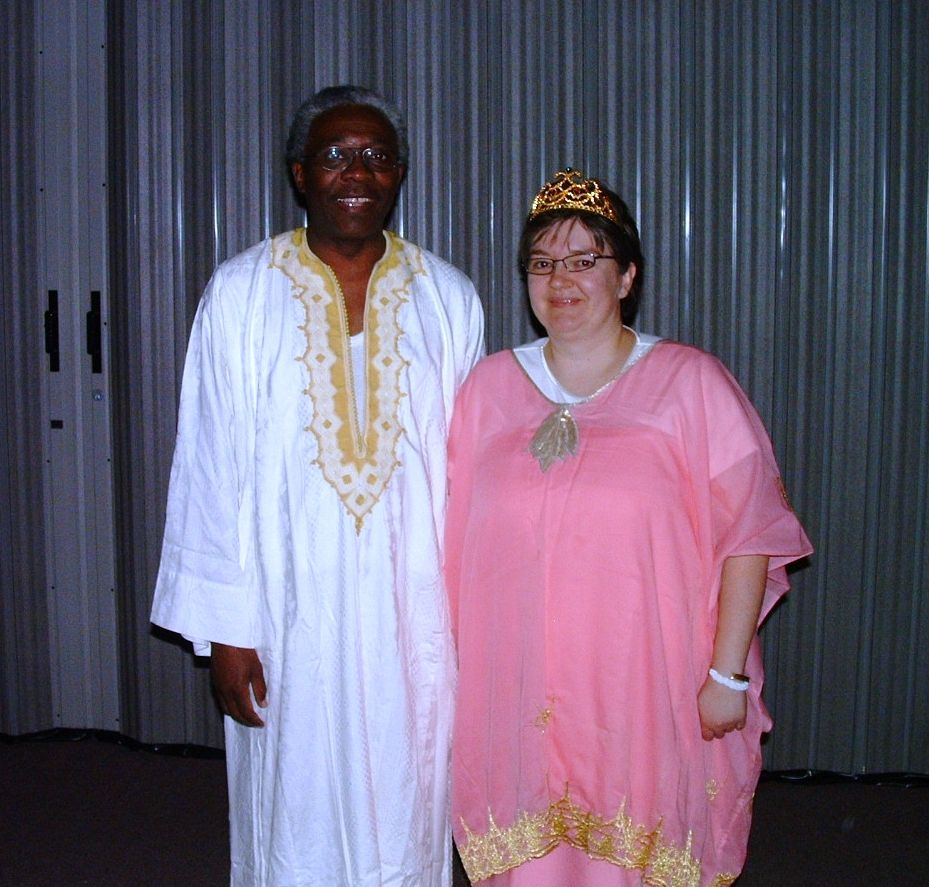 Maweti Kikongi came to Canada from the Democratic Republic of Congo in 1980, and settled in Sherbrooke, Quebec. He met the missionaries and was baptized in 1988, and his wife, Brigitte, joined the Church a year later. Maweti has served twice as branch president and once as bishop of the Sherbrooke Ward.[31] (Mawetti Kigongi)
Maweti Kikongi came to Canada from the Democratic Republic of Congo in 1980, and settled in Sherbrooke, Quebec. He met the missionaries and was baptized in 1988, and his wife, Brigitte, joined the Church a year later. Maweti has served twice as branch president and once as bishop of the Sherbrooke Ward.[31] (Mawetti Kigongi)
Immigrants to Canada from other nations of the world, whether they are baptized in Canada or are already Church members when they arrive, have greatly contributed to the growth and development of the Church in Canada. An example of this is the Hispanic population in Montreal, where LDS immigrants from Latin America have brought leadership and experience and have enriched the Mormon community there.[32]
Challenges in Telling the Story of the Canadian Church
Structuring the Book to Match the History
Given the time period of the Church’s history in Canada (from 1829 to 2016), the wide geographical area covered, and large number of places involved, telling the story of the Canadian Church in an accessible fashion has presented some unique challenges. Obviously, an initial chapter was needed to cover the missionary labours and faith legacy of the early-preaching period in eastern Canada. Likewise, it was apparent that a chapter was needed to cover the pioneer settlement period in Alberta from 1887 to 1923. The problem of dealing with the many places involved was resolved by adding maps at the beginning of each chapter, opposite the title page.
But the period of the growth and development of the Church and its establishment across the entire country spanning the period from the late 1880s to the present involved some particular challenges. Given the regional nature of the country, the narrative for the establishment of the Church in Canada obviously needed to focus largely on the various regions, provinces, and locations where the Church was established. But there were many themes common to the whole of the Canadian Latter-day Saint experience that could only be alluded to in these chapters. To capture the essence of the overall story, three thematic chapters were placed after the Alberta settlement chapter to give an overview of Canadian Church development and to outline themes and patterns not fully explained in the geographically based historical chapters. These thematic chapters include a discussion of the growth and distribution of Church membership and its changing ethnic composition; the impact on Canadian Latter-day Saints of the teachings, policies, and programs of the worldwide Church; and the changing pattern of community life and culture in a Canadian environment and the Church’s adaptation to Canadian government policy. Written by respected academics from such fields as geography, sociology, cartography, and others, these “bookend” chapters elucidate themes common to all regions and also discuss unique aspects of the Church in Canada as a whole.
The development of the Church across the country since the late nineteenth century reflect its far-flung regions and geographical divisions. Nine chapters thus focus on the growth and maturity of the Church in the various provinces and regions of Canada, from west to east, as indicated in the table of contents. Written by knowledgeable and assiduous local researchers, each of these chapters, with the exception of the chapter on the Far North, is focused on a Canadian temple district. Each chapter (with that exception) shows how the growth and development of the Church in each area progressed to the point where, in terms of membership numbers and maturity, each area was prepared to have its own temple, making the highest blessings of the gospel readily available.
The building of temples, in fact, is an indicator of the expanding reach of the Church across the country. The Cardston Alberta Temple, dedicated in 1923, was the only temple in Canada for many years, until the temple in Toronto was dedicated in 1990. Four other temples followed within the next decade in Halifax, Regina, and Edmonton in 1999, and in Montreal in 2000. Temples were dedicated in Vancouver (2010) and Calgary (2012), and a ninth temple is now under construction in Winnipeg.
Building on the foundation of the geographically based historical chapters, three additional thematic chapters follow as a further elucidation of the overall story. The first is a sociological study of the components that contribute to a distinctive Latter-day Saint way of life, focusing on family values, health, education, and employment. A second chapter assesses the contribution of Canadian Mormons to the Church, to Canada and other countries, and reflects on both individual and group accomplishments, while a third chapter positions the whole of Canadian LDS development within the global perspective. These thematic chapters, the concluding “bookend” chapters, place the entire study in a broader context and complete the historical narrations.
This is not the whole story. Since the late 1960s, Canada has been defined as a bilingual country, with French and English as its two official languages, and has been recognized as a country with many cultures. The changing linguistic and ethnic composition of the Church in Canada in the last fifty years has been reflected in several chapters. The “French fact” is manifested in the chapter on Quebec, which now has two vigorous French-speaking stakes. “Visible minorities” (as ethnic groups are referred to in Canada), are most strongly represented in the big cities such as Montreal, Toronto, and Vancouver, to the extent that there are Chinese, Spanish, and Korean branches in nearly twenty localities. The Canadian First Nations population is likewise represented, with their own branches in a few locations. The proportions of each ethnic group in the Church population may vary in terms of the general population across the country, falling sometimes below the national level.[33] But the inclusion of these several cultural and linguistic groups within the Church has enriched the Church’s cultural fabric. Although people of many different backgrounds have had to adjust to each other, all have felt a sense of unity and purpose in building the kingdom of God. While the Canadian Confederation, though not without problems, has been considered a model for the inclusion of diversity, the Church in Canada is to be lauded for an even more harmonious commingling of people from all nations.
 Chinese Dance. In 2007, the Church in the Vancouver area presented a program titled “Every Nation, Every People,” which showcased the ethnic diversity in British Columbia. The program featured music and dancing from many cultures. (Shelley Murley)
Chinese Dance. In 2007, the Church in the Vancouver area presented a program titled “Every Nation, Every People,” which showcased the ethnic diversity in British Columbia. The program featured music and dancing from many cultures. (Shelley Murley)
Innovative Book Design for Reader Accessibility
This book is a scholarly, fully documented, archival-based work built on more than four years of archival research at the Church History Library in Salt Lake City, Utah. It has been peer reviewed and published by a university press. But as an academic book, it has some unique adaptations. Written in graceful, accessible prose, it is suited for the general reading public as well as an academic audience, and has been adapted for audiences not only within Canada but also for those in the United States and elsewhere. To increase its interest and accessibility, it has been richly illustrated in a variety of ways. Maps of the current Church status in each area have been included at the beginning of the historical chapter to aid the reader in locating the numerous places mentioned. With the goal of having on average one visual per page, the book has been illustrated with more than 500 photos; approximately 95 maps, graphs, charts, and timelines; and numerous special-interest sidebars. Timelines in each historical chapter show in a graphic way the development of the Church in each area, and include the names and dates of service of key leaders, obviating the need for numerous tables for these.
The main appeal of this book is to Latter-day Saints in Canada or with a Canadian connection. Authored by a team of twenty-one faithful Latter-day Saints who have shared understandings and insights from their personal experience, the book contains faith-promoting stories and biographies and is intended to both instruct and edify with regard to the Latter-day Saint spiritual heritage in Canada. It may nevertheless resonate with an academic audience, since it is the first comprehensive scholarly history of the Latter-day Saints in Canada in nearly fifty years. The narrative has been integrated into the context of Canadian historical development, including the distinctive evolution of Quebec society; and the book has been adapted for the general public by providing brief background explanations on Latter-day Saint history, beliefs, and terms.
Preserving the Canadian LDS Heritage
Review of Literature
The last comprehensive general history of the Church in Canada, The History of the Mormon Church in Canada,[34] was published in 1968 by the Lethbridge Stake. A compilation of academic papers, The Mormon Presence in Canada, edited by Brigham Y. Card and others, was published in 1990—the result of a 1987 conference on Mormons in Canada, held at the University of Alberta in Edmonton.[35] Both of these core volumes have long since gone out of print. There have been important works on southern Alberta in recent decades, such as the printed diaries of Charles Ora Card, biographical accounts of E. J. Wood and the publication of local histories such as those of southern Alberta towns, Cardston, Raymond, and Stirling. Other recent publications on the LDS Church in Canada have consisted of academic or popular articles and published journal records, often focused on the southern Alberta LDS community. There have been several ward and stake histories. But the study of themes of general interest to all of Canada has largely been neglected. There is no recent comprehensive treatment of the history of the Church in Canada.[36] The need for an updated scholarly history of Mormons in Canada has become all too apparent.
Origins of the Book
I was first motivated to prepare a history of The Church of Jesus Christ of Latter-day Saints for the province of Ontario, where my wife, Carma, and I had been long-term residents, because there were only fragments of the entire provincial development in the scattered local histories of various Church communities. Nor was there an overall treatment for the entire country. At one point, a mission call was under discussion for Carma and me to work in Toronto as public affairs missionaries, with a special assignment to compile a history of the Church in Ontario. But through a remarkable set of circumstances in which our interest in Canadian history was relayed to Matthew K. Heiss, a global director at the Church History Library in Salt Lake City, Utah, we were called to the Family and Church Headquarters Mission to work at the Church History Library on the history of the Church in Canada.
As we embarked in August 2013 as full-time missionaries in the Church History Library in Salt Lake City, Carma began working in the “Country Profiles” project to do research on the development of the Church in the Canadian provinces. My role, more loosely defined, was initially to manage a project to write the history of the Church in eastern Canada (east of the Manitoba border), with the hope of getting up a second team to write the history of the western part of the country. But it soon became apparent that there was not enough time to mount a second team if we were to meet the goal of covering the entire history in time for the Canadian Sesquicentennial in 2017. As a Canadian and an observant Church member, I felt it important to explore the overall historical development for the entire country and to highlight the faith heritage and contribution of the Latter-day Saints across the whole country. With the support of Matthew K. Heiss, I thus decided to take on the project to prepare a history of the Church in the entire country. Fortunately, I had the experience of editing or coediting six previous collective works, one of which, The Mormons: An Illustrated History of The Church of Jesus Christ of Latter-day Saints, provided background experience in illustration using photographs and maps. It was therefore decided that the book would be illustrated, consisting of approximately 25 percent visual material.
Method and Approach
To write the history of the Latter-day Saints in Canada was obviously too big a task for one couple. Having been the editor or coeditor of previous collective works, I turned to this model, orchestrating, as general editor, the work of many people. This volume is thus the culmination of a major sesquicentennial project, which has required the collaborative efforts of a team of more than forty people, including trained historians, demographers, sociologists, a cartographer, and experts from other disciplines. Those chapters covering the development of the Church in each of the provinces or regions across the country were written by local specialists, who drew not only on documents and information available locally and their own personal experience, often over many years, but also information gleaned from correspondence and interviews with local residents. Though several authors had had professional training in history, others drew on skills developed in public affairs or other professional pursuits, which have made them insightful local observers.
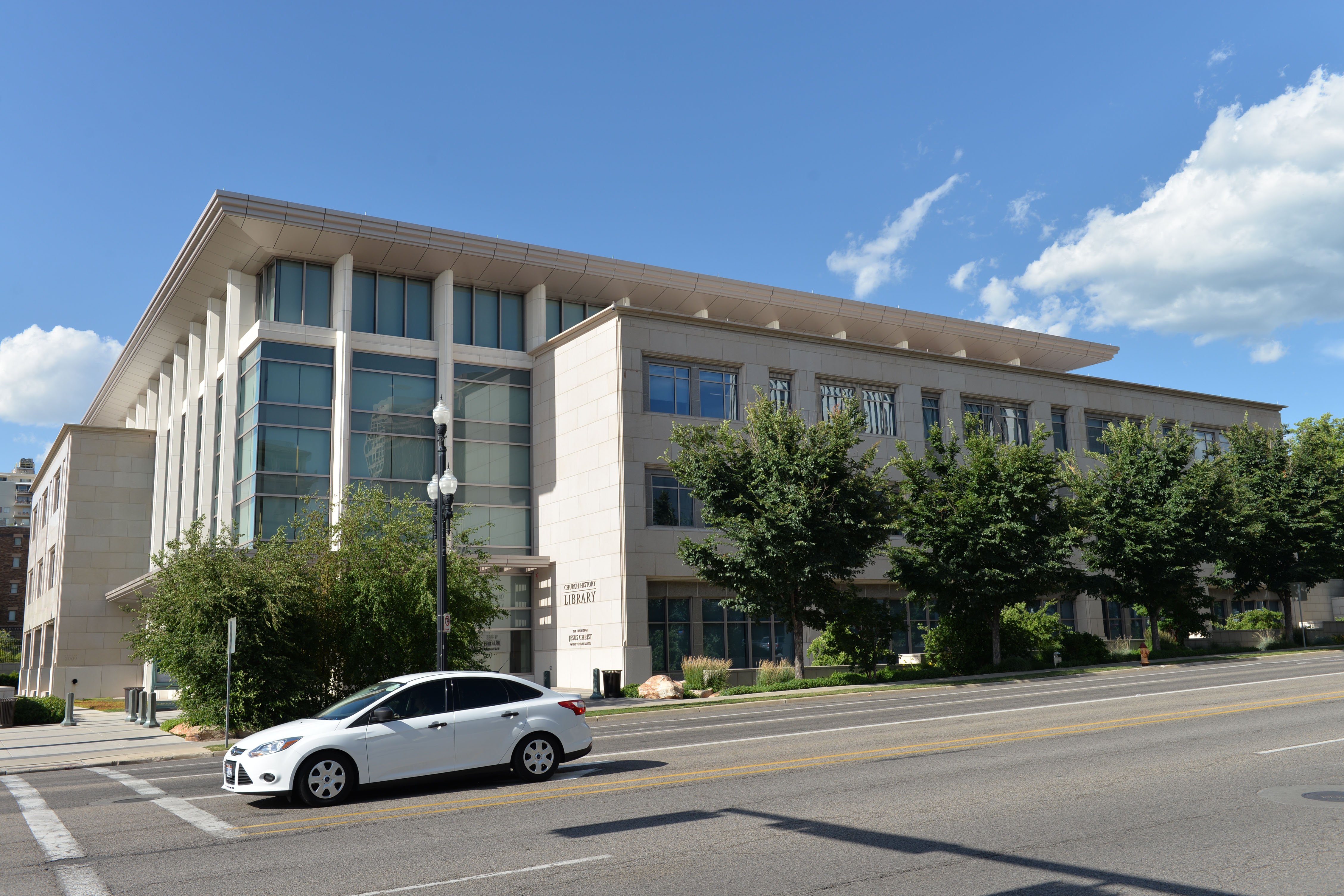 The archival records collections of the Church History Library, a state-of-the-art facility, which opened in 2009, were vital to the creation of this work. (Leslie Feil)
The archival records collections of the Church History Library, a state-of-the-art facility, which opened in 2009, were vital to the creation of this work. (Leslie Feil)
In addition to their own research, chapter authors drew upon the Canada “Country Profiles,” compiled between 2013 and 2016 at the Church History Library in Salt Lake City, Utah, which were made available to them. Serving as a full-time missionary, my wife, Carma T. Prete, conducted research on the development of Church in seven-and-a-half provinces and the northern Canadian territories, while four local part-time Church service missionaries, Donald D. Schneider, Richard B. Vance, and Stephen C. Carter, researched other Canadian provinces. O. William Asplund researched specific issues in several provinces. In 2016, Serenity and Thomas Roulstone, as full-time missionaries, conducted detailed research on the growth of the Church in their home province of British Columbia. These compilations, based on archival records, provided a province-by-province documentation of major events and developments, supplemented by a selection of photos and significant stories of faith, for the use of chapter authors.
While the original plan was to have local authors rely on local histories of stakes, missions, districts, wards and branches, that plan soon became inoperative because these records were spotty at best, and an initiative to have each unit update or write such a history proved unworkable. After the mid-1970s, since the Church lacked storage space, it cut back on local-record keeping responsibilities. Because of this, the records collected from Church administrative units and located at the Church History Library were insufficient to cover the entire experience of Church units beyond that time. There needed to be another solution.
The answer was to supplement existing records with oral history interviews. Matthew Heiss, who had conducted several thousand oral history interviews over a twenty-year period, facilitated the training of several willing volunteers as oral history interviewers, and an oral history program for Canada was launched. Terry and Arnon Livingstone, Canadian-born residents of Glendale, Arizona, pioneered this endeavour to capture the experiences of Canadian Saints. Called to serve as Church service missionaries on an unprecedented missionary assignment, they toured the three Canadian Maritime Provinces, as well as Ontario, Alberta, and Saskatchewan, to conduct oral history interviews, take photographs, identify relevant documents, and train several others in conducting oral history interviews. Still others, including a team of five French- and Spanish-speaking members from Montreal, were trained from the Church History Library in Salt Lake City, Utah. One couple was trained in person, and the others were trained at a distance with the use of modern communication technology. Several chapter authors also received training in oral history techniques. For example, Ruth and Richard Yates, who were trained over Skype in the spring of 2015, conducted thirteen oral histories with Church members in all the far-flung areas of British Columbia that summer.
Altogether, a total of sixteen volunteers were trained as oral history interviewers for the project. Through their efforts, several dozen long-term Church members, located in various regions of Canada, were able to share and preserve their local knowledge and experiences. These recorded interviews, which were available to chapter authors as they crafted their histories, significantly complemented the available local and archival records. The voices of these men and women fleshed out and completed the social history of their times. Their reflection will be of particular interest to Latter-day Saints from the same areas who have shared similar experiences.
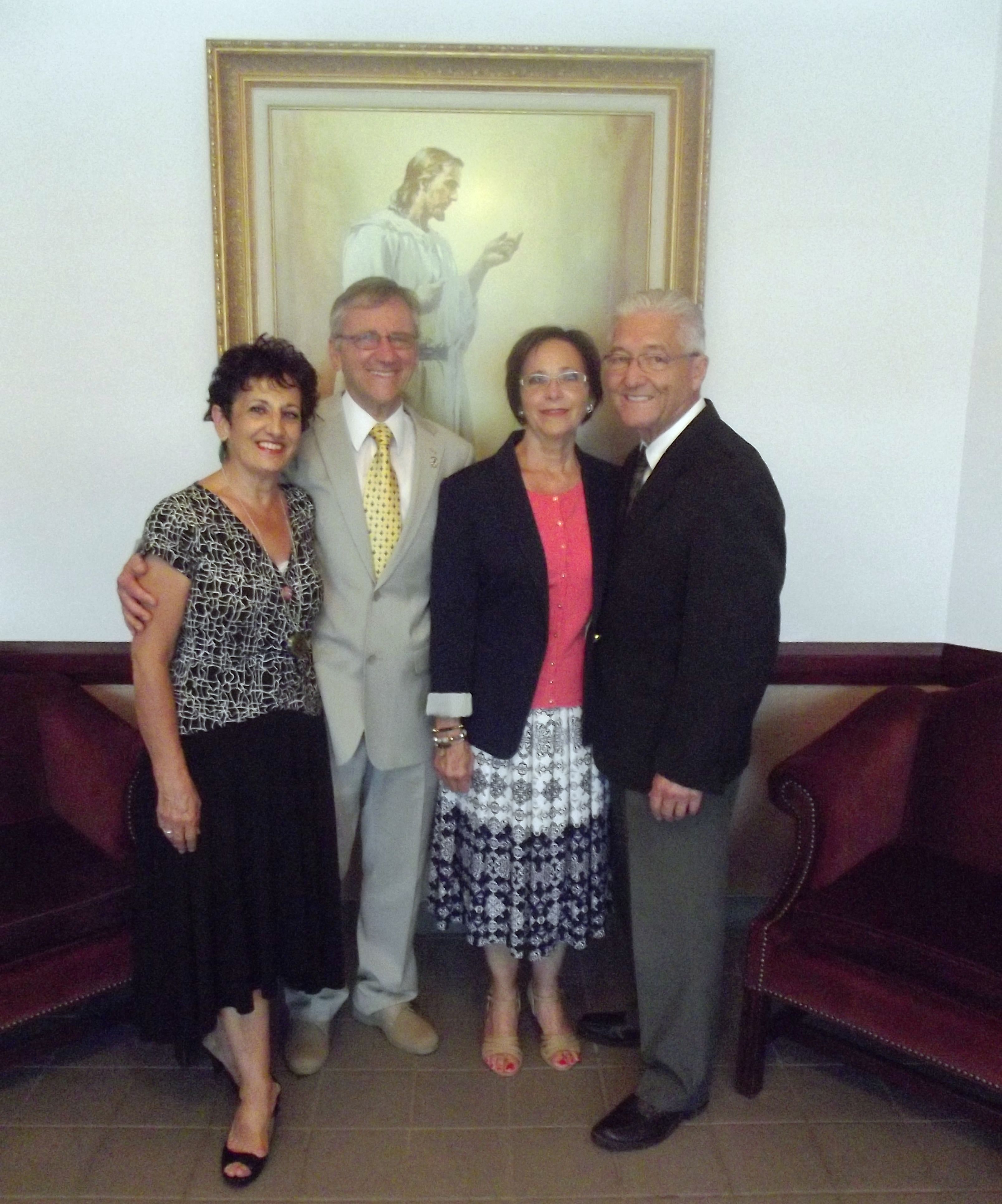 Oral history interviews were an important source of information for this book. Shown here are, left to right, France and Léona Caron and Jocelyne and René Sénéchal, who conducted oral history interviews in Quebec. These two couples, plus Lindsay Luc (not shown), made up the Montreal team. (Léona Caron)
Oral history interviews were an important source of information for this book. Shown here are, left to right, France and Léona Caron and Jocelyne and René Sénéchal, who conducted oral history interviews in Quebec. These two couples, plus Lindsay Luc (not shown), made up the Montreal team. (Léona Caron)
With a blend of archival sources, local records, and oral histories, the historical chapters relate a more complete account of the development of the Church in the various regions of Canada than has been done before. Moreover, chapter authors have assembled the bulk of the photographs. Award-winning cartographic editor Brandon S. Plewe has created numerous maps, illustrations, timelines, graphs and charts to enhance the presentation.
Caveats
This is admittedly a book about a religious people written by a set of believing authors. In time past, historians, striving for objectivity, have shied away from discussing the miraculous and the supernatural experience of people as facts, preferring to distance themselves from such experiences by saying that this or that person “claimed” that these things happened. But in recent years, many in academe have become more willing to consider spiritual experiences and religious history in terms of the records of the participants. Having concluded that there is no such thing as totally objective history, since each author has his or her own mind set, culture and value system, which inevitably affect their work, many historians have come to the sustain the view that one can best understand religious phenomena in terms of the mindset of those who had the experience.[37] In this history we have tried to be true to what each experience has meant to those who have lived it, or as it has been understood by those in the culture, who may have an innate sense of what it meant. Perhaps those not of the LDS faith may nevertheless be enriched by seeing how those within the religion have viewed themselves. We have tried to balance controversial issues, such as the practice of plural marriage, in their just proportions, neither ignoring nor exaggerating their significance relative to the Canadian setting.
While every effort has been made to base this volume on careful archival research supplemented by oral histories and the insights of the authors, there is one omission which needs to be averred. Since the early days of The Church of Jesus Christ of Latter-day Saints, the Church has had a system of discipline by which those not adhering to Church standards of conduct or who have fallen into apostasy from core beliefs have been disciplined (see D&C 102). These sanctions, administered after the deliberations of a hearing or disciplinary council, have included such things as excommunication (losing one’s membership) or disfellowship (losing certain privileges such as partaking the sacrament or exercising the priesthood). These councils have been termed “courts of love,” as their primary intent is to reclaim the wayward. However, in some cases, their purpose is also to preserve the reputation of the Church where malfeasance is known or members are placed at risk. The approach in this book has been to not report or reflect on individuals who have been the subject of Church discipline except in cases where they have apostatized from Church teachings and have led groups of people to follow them, contrary to the teaching of the Church. The privacy of those disciplined for other forms of misconduct—many of whom later return to full fellowship—and the reputation of their surviving families are thus preserved. [38]
In writing a general history such as this, it has not been possible to include the names of all those who have laboured to build up the kingdom of God in Canada. We express deep appreciation to the vast numbers who have quietly served and whose contributions have not been noted. Please know that your efforts are recorded in books of greater eternal value than this one for the angels to look upon (see 3 Nephi 27:26; Revelation 20:12). While we have tried to give some attention to founding stories in each region, many wards, branches, and even stakes have had only summary treatment. For this we also apologize. The story has been so vast that we have had to rely on themes and types of experience and have not done more than scratch the surface in terms of overall treatment. We hope that this book will provide the impetus for additional local histories to fill in these gaps.
Preserving the Legacy
This volume, to coincide with the Canadian sesquicentennial of Confederation in 2017, celebrates the history of The Church of Jesus Christ of Latter-day Saints in Canada from its early beginnings through to the present. This is a story of faith, in which the underlying theme of faith may be seen as the principal factor in the Canadian Mormon accomplishment. But it is also a story of dedication, perseverance, mutual support, and service, which is important to memorialize not only for members of the Church, but also for a general audience interested in the overall fabric of Canadian development.
There have been pioneers in every generation—in the period of early preaching, in the settlement period, and in the period of establishing the Church countrywide. Those hardy pioneers in each generation who have gone before and blazed a trail for others to follow have left a legacy that will be an inspiration for many generations to come. They have also become an integral and important part of their “home and native land,”[39] to which they have made important contributions in many fields.
Conclusion
Because Canada adjoins the United States in the longest undefended border in the world, the history of The Church of Jesus Christ of Latter-day Saints in Canada has been intimately connected with that of its southern neighbour. The first place where the gospel was preached outside the United States was in Canada, which yielded a rich harvest of approximately 2,500 converts from 1832 to 1853, as well as several early leaders. As a place of refuge, Canada was the location of the southern Alberta settlement to which Charles O. Card led a group of settlers in 1887, under the advice of John Taylor. The southern Alberta settlement became the “seedbed” for the establishment of the Church in Canada. The dedication of the Alberta Temple in 1923 was the symbol of their accomplishment. In the twentieth century, missionaries, mostly from the United States, by sheer dint of effort, established the faith all across the country, with more than 486 congregations, eight temples and one to come, and a membership by the end of 2015 of nearly 194,000,[41] making it a truly Canadian religion.
The Canadian LDS contribution, both within the general Church, in terms of leaders and numbers, and within Canada, in such things as the pioneering of irrigation and the contribution to Canadian communities, has been immense. Faith is the principal ingredient in the Mormon accomplishment in Canada. The faith of early missionaries in Eastern Canada, Mormon settlers in Alberta, and missionaries, converts, and members in the twentieth century runs like a thread through the story. It is implicit in the history of Latter-day Saints in each province and region. The heritage of Mormonism is a legacy of faith about which Church members can be proud. In the Mormon hymn “Praise to the Man,” it is stated that “sacrifice brings forth the blessings of Heaven.”[42] The saga of The Church of Jesus Christ of Latter-day Saints in Canada is a powerful reminder of that truth.
But the story of Canadian Mormons is more than just a story of growth and development in the face of significant challenges, such as vast distances and sometimes severe weather conditions. While affected by many cross-border influences and while living a distinctive lifestyle based on their belief and practices, Canadian Mormons have mirrored their country in terms of language and ethnicity, and have developed an identity and a faith heritage unique to Canada. The story is thus of general interest to all Canadians.
Notes
[1] Dean Perkins, Members and Statistical Records Division, The Church of Jesus Christ of Latter-day Saints, email to Stephen V. Beck, Country Profile Manager, Church History Library, 28 March 2016.
[2] For updated information on the Church in Canada, see “Facts and Statistics,” Mormon Newsroom, www.mormonnewsroom.org/
[3] Richard L. Bushman, Joseph Smith and the Beginnings of Mormonism (Urbana and Chicago: University of Illinois Press, 1984), 51–55. For the origins and subsequent history of The Church of Jesus Christ of Latter-day Saints, see Richard Lyman Bushman, Joseph Smith: Rough Stone Rolling, A Cultural Biography of Mormonism’s Founder (New York: Alfred A. Knopf, 2005); Arnold K. Garr, Donald Q. Cannon, and Richard O. Cowan, eds., Encyclopedia of Latter-day Saint History (Salt Lake City: Deseret Book, 2000); Out of Obscurity: The LDS Church in the Twentieth Century, The 29th Annual Sidney B. Sperry Symposium (Salt Lake City: Deseret Book, 2000). For documentary collections of the Joseph Smith period, see Joseph Smith, History of the Church of Jesus Christ of Latter-day Saints, 7 vols. (Salt Lake City: Deseret Book, 1976–80) [C 1932–51]; The Joseph Smith Papers, 23 vols. [to date] (Salt Lake City: Church Historian’s Press, 2008–16).
[4] See also History of the Church, 4:583.
[5] “Canada’s Population Estimates: Age and Sex, July 1, 2015,” Statistics Canada, released 29 September 2015, www.statcan.gc.ca/
[6] For a fuller account, see Carma T. Prete, “Eastern Canada: An Early Fruitful Field, 1829–1877”; and Carma T. Prete, “The Canadian Contribution,” herein.
[7] Brigham Y. Card et al., eds., The Mormon Presence in Canada (Edmonton: University of Alberta
Press, 1990), xv–xvi.
[8] Brigham Y. Card, “Charles Ora Card and the Founding of the Mormon Settlements in Southwestern Alberta” in Card et al., Mormon Presence in Canada, 85, 88.
[9] For a full account, see Rebecca J. Doig and W. Jack Stone, “The Alberta Settlement,” herein.
[10] Themes covered in many chapters, herein.
[11] See “Facts and Statistics, Mormon Newsroom, www.mormonnewsroom.org/
[12] David E. Sheppard, comp., “The History of the Kentville Saints: Celebrating 35 years of Organization as a Branch and a Ward,” 1996, Dartmouth Nova Scotia Stake records, LR 517364 23, box 1, folder 2, 36–48, Church History Library (hereafter CHL), Salt Lake City, Utah.
[13] See Carma T. Prete, “The Canadians Contribution,” herein, for greater detail on those mentioned in this section and others of note.
[14] For a fuller treatment, see Carma T. Prete, “The Canadian Contribution,” herein.
[15] “History of Tyendinaga: The Landing of the Mohawks of the Bay of Quinte,” Mohawks of the Bay of Quinte / Kenhteke Kanyen’kehà:ka, www.mbq-tmt.org/
[16] “Underground Railroad,” History, www.history.com/
[17] “Sitting Bull,” History, www.history.com/
[18] Leo Dreidger and Frank H. Epp, “Mennonites,” Julie Rak and George Woodcock, “Doukhobors,” and John Ryan, “Hutterites,” Historica Canada, www.thecanadianencyclopedia.ca.
[19] “Canada, A History of Refuge,” Government of Canada, www.cic.gc.ca/
[20] CBC News broadcast, 31 December 2016.
[21] “His Conversion Took Courage,” Deseret News, 1 April 1972, 12. See also Hans Peets, FamilySearch, https://
[22] “His Conversion Took Courage,” 12.
[23] “His Conversion Took Courage,” 12.
[24] The Great Canadian Mission: A Jubilee History (Canadian Mission Office, 1969), 48.
[25] Sustaining list, Ottawa Ontario Stake conference, 27 February 1977, Ottawa Ontario Stake manuscript history and historical reports, CHL, LR 15989 2. See also Minutes of the stake conference of the Ottawa Ontario Stake, 27 February 1977, Ottawa Ontario Stake general minutes, CHL, LR 15989 11.
[26] Hans Peets, historical positions, Church Directory of Organizations and Leaders (CDOL), last updated 3 February 2010, cdol.lds.org. See also Hans Peets, FamilySearch.
[27] Donald G. Godfrey and Brigham Y. Card, eds., The Diaries of Charles Ora Card: The Canadian Years, 1886–1903 (Salt Lake City: University of Utah Press, 1993), 12; emphasis in original.
[28] Godfrey and Card, Card Diaries: Canadian Years, 57; emphasis in original.
[29] Gordon B. Hinckley, dedicatory prayer of the Toronto Ontario Temple, 25 August 1990, “Toronto Ontario Temple: Sacred Day of Dedication in Canada,” Church News, 1 September 1990, 6.
[30] Chu-Jen Chia, interview by Matthew K. Heiss, 6 July 2010, Salt Lake City, CHL, OH 4553.
[31] Maweti S. Kikongi, interview by Léona and France Caron, 28 June 2015, Sherbrooke, Quebec.
[32] See George Eric Jarvis and Catherine Arta Johnson Jarvis, “Quebec,” herein.
[33] See Daniel H. Olsen, Brandon S. Plewe, and Jonathan H. Jarvis, “Historical Geography: Growth, Distribution, and Ethnicity,” herein; also, Roy A. Prete, G. Eric Jarvis, and Jonathan A. Jarvis, “The Linguistic and Ethnic Transformation of the Church in Quebec since the mid-1960s,” in Journal of Mormon History (forthcoming Fall 2017).
[34] Lethbridge Stake, The History of the Mormon Church in Canada (Lethbridge: Lethbridge Stake, 1968).
[35] Card et al., Mormon Presence in Canada.
[36] See Alexander L. Baugh, “Mormonism in Western Canada: Selected Bibliography,” Regional Studies in Latter-day Saint History: Western Canada (Provo, UT: Department of Church History and Doctrine, Brigham Young University, 2000), 293–304. For a more recent assessment of the literature, see David B. Marshall, “The Latter-day Saints, the Doughnut, and Post-Christian Canada,” Journal of Mormon History 39, no. 2 (2013): 35–77. For further details, see O. William Asplund, “Bibliography,” herein.
[37] Richard Bushman, Joseph Smith and the Beginnings of Mormonism (Urbana: University of Chicago Press, 1984), 3, 7–8; Bushman, Joseph Smith: Rough Stone Rolling, xxi. For an informed discussion of these ideas in a broader historical context, see Brian Q. Cannon, “Faith versus Objectivity: Trends in Providential and Mormon History,” unpublished manuscript, 2014, 20–25, in possession of author. Cannon cites other scholarly discussion of the subject, including Brad Gregory, Salvation at Stake: Christian Martyrdom in Early Modern Europe (Cambridge: Harvard University Press, 1999), 350; and Robert Berkhofer, A Behavioral Approach to Historical Analysis (New York: Free Press, 1969).
[38] Based on personal information and knowledge of author, who has had a long experience in Church administration.
[39] “Anthems of Canada: Official Lyrics of ‘O Canada,’ English Version,” Government of Canada, http://
[40] Judy O’Neill Snarr, telephone interview by Carma T. Prete, 20 June 2016.
[41] “Facts and Statistics,” Mormon Newsroom, www.mormonnewsroom.org/
[42] W. W. Phelps, “Praise to the Man,” Hymns (Salt Lake City: The Church of Jesus Christ of Latter-day Saints, 1985), no. 27.
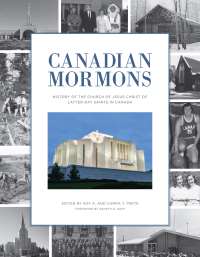
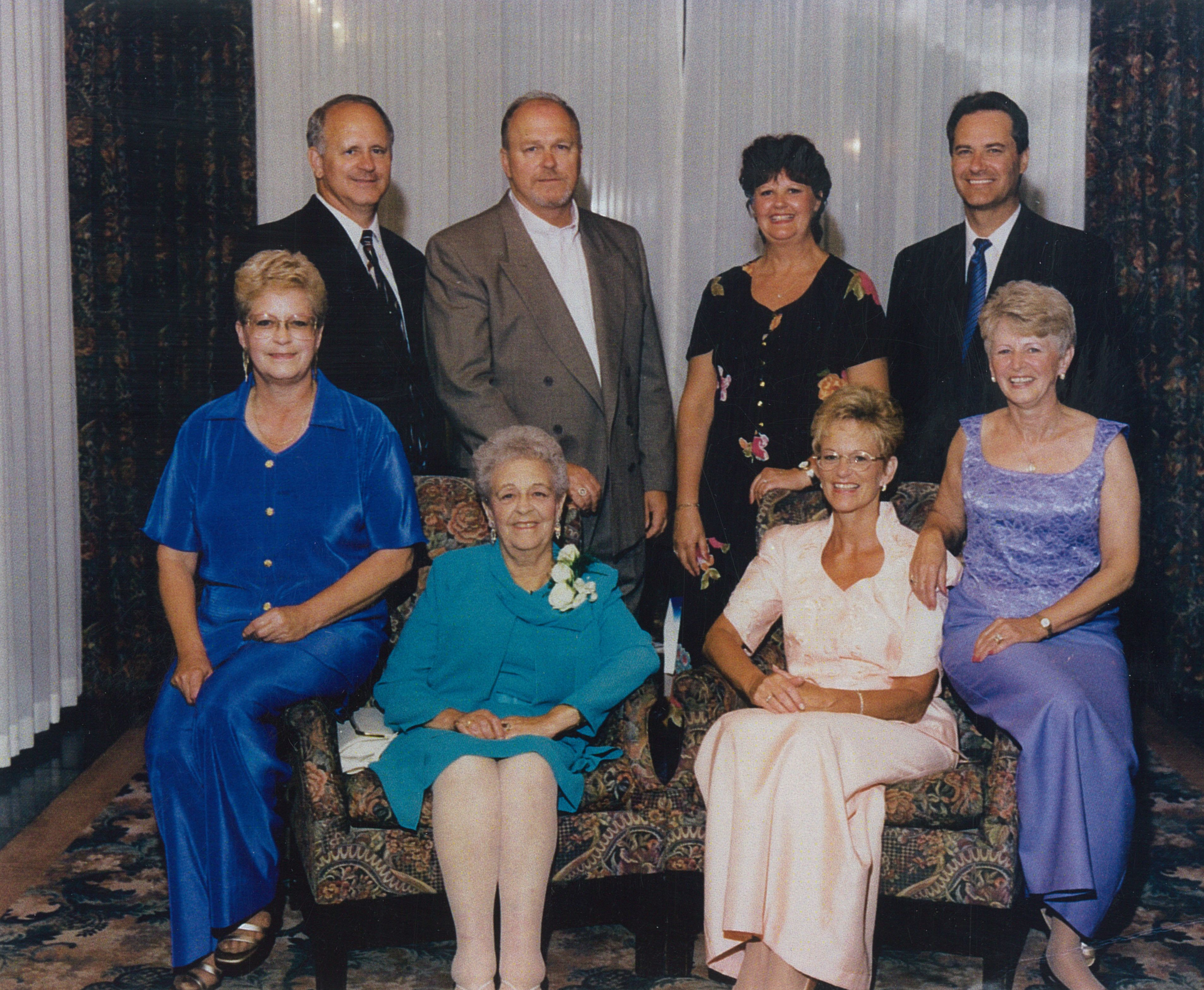 The O’Neill family in 1998. Back row, left to right: Michael, John, Cathy, Rob; front row: Sandra, Dorothy, Judy and Dale. (Judy Snarr)
The O’Neill family in 1998. Back row, left to right: Michael, John, Cathy, Rob; front row: Sandra, Dorothy, Judy and Dale. (Judy Snarr)